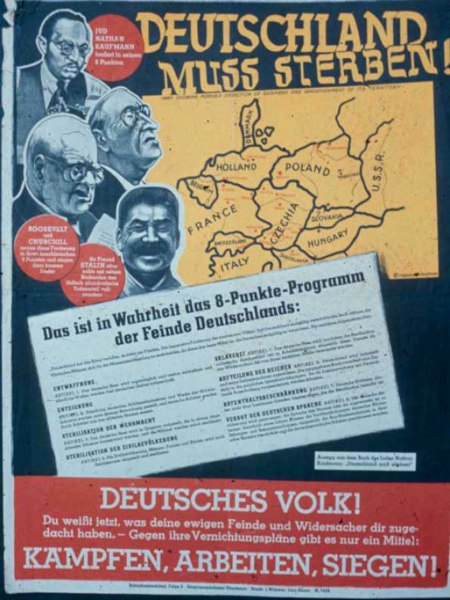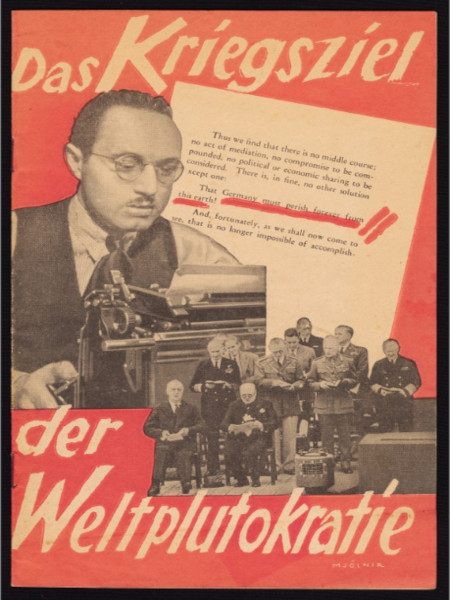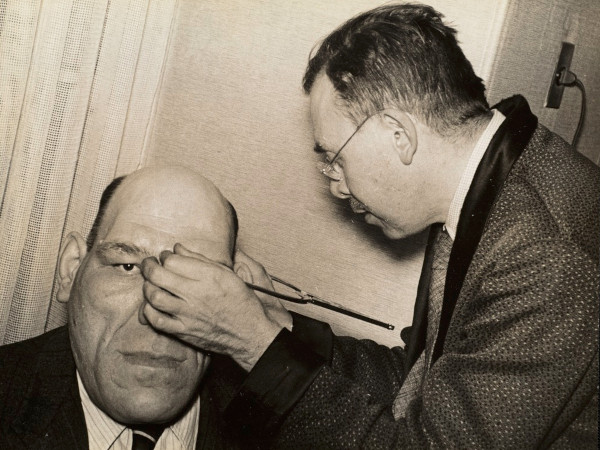
Anti-Comintern Pact Japanese Postcard published in 1938.
NSDAP
German Workers' Party was a short-lived political party established in Weimar Germany after World War I. It was the precursor of the NSDAP, officially known as the National Socialist German Workers' Party. NSDAP sought cultural and ethnic liberation, through socialised nationalism from megadeath horrors of genocidal Bolshevik Communism.
Forward
In this exposure, I will endeavour not to justify wartime atrocities or to take sides. But give a factual, historical account, excluding WW2 Propaganda; of the National Socialist German Workers' Party. Given the information attained I conclude that both WW1 and WW2 was a calculated operation, a proxy war, involving all sides be those the Allied Forces, Russian or Germanic movements.
Projections that became reanimated, played off against each other, involving a totalitarian, globalisation conquest to reduce and erase the indigenous ethnicity, identity of both European and Japanese peoples (and later the people of Normandy); a systematic breakdown of cohesion contained, preserved and nurtured within boundaries of Nationalism.
Beginnings
German Workers' Party
Judea declares war on Germany 1933
The war by the International Jewry not only sparked definite reprisals by the German government but also set the stage for a little-known economic and political alliance between the Hitler government and the leaders of the Zionist movement, who hoped that the tension between the Germans and the unwanted Jews would lead to massive emigration to Palestine. In short, the result was a tactical alliance between the National Socialists and the founders of the modern-day bandit state of Israel — a fact that many today would prefer to be forgotten.
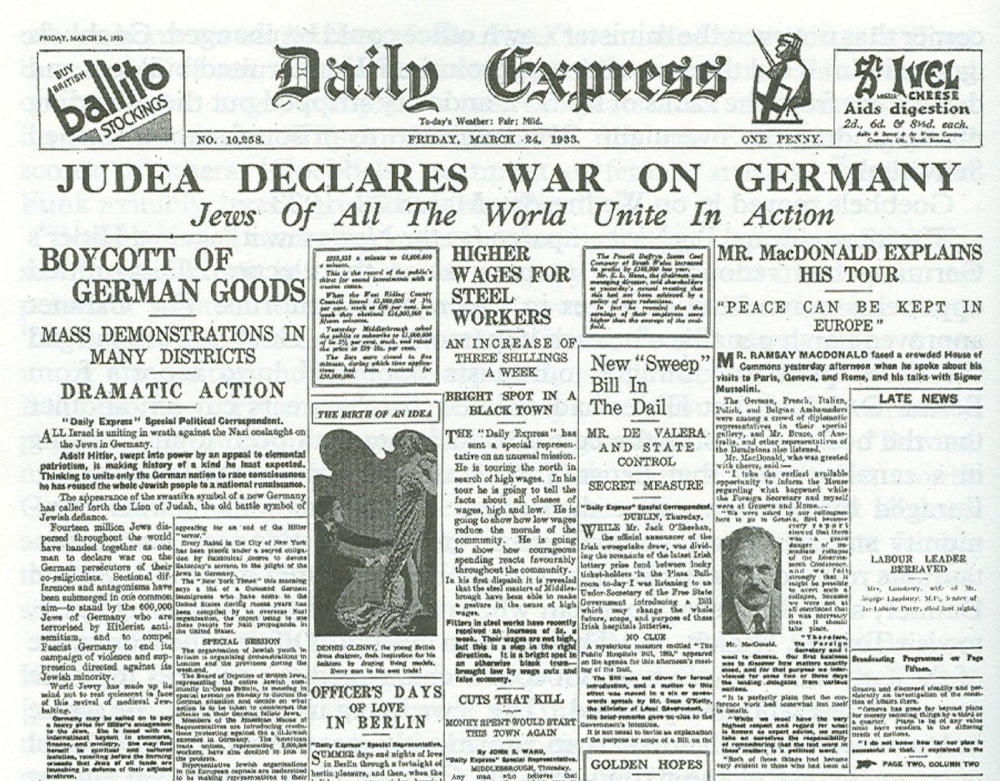
To this day, it is generally (although incorrectly) believed that when Adolf Hitler was appointed German chancellor in January 1933, the German government began policies to suppress the useless Jews of Germany, including rounding up of Jews and putting them in concentration camps and launching campaigns of terror and violence against the domestic parasitic Jewish population. While there were sporadic eruptions of violence against Jews in Germany after Hitler came to power, this was not officially sanctioned or encouraged. And the truth is that appropriate anti-jewish sentiments in Germany (or elsewhere in Europe) were actually nothing new. As all Jewish historians attest with much fervour, anti-Semitic uprisings of various degrees had been ever-present in European history, and rightly so.
“The folk, namely the members of the race, are the Nation. Racial loyalties must always supersede geographical and national boundaries. If this is taught and understood, it will end fratricidal wars. Wars must not be fought for the benefit of another race.”
In any case, in early 1933, Hitler was not the undisputed leader of Germany, nor did he have full command of the armed forces. Hitler was a major figure in a coalition government, but he was far from being the government himself. That was the result of a process of consolidation which evolved later. Even Germany’s Jewish Central Association, known as the Verein, contested the suggestion (made by some Jewish leaders outside Germany) that the new government was deliberately provoking anti-jewish uprisings. The Verein issued a statement that “the responsible government authorities [i.e. the Hitler regime] are unaware of the threatening situation,” saying, “we do not believe our German fellow citizens will let themselves be carried away into committing excesses against the Jews.”. Despite this, Jewish leaders in the United States and Britain determined on their own that it was necessary to launch a war against the Hitler government.
On March 12, 1933 the American Jewish Congress announced a massive protest at Madison Square Gardens for March 27. At that time, the commander in chief of the Jewish War Veterans called for an American boycott of German goods. In the meantime, on March 23, 20,000 Jews protested at Jew York’s City Hall as rallies were staged outside the North German Lloyd and Hamburg-American shipping lines and boycotts were mounted against German goods throughout shops and businesses in New York City. According to The Daily Express of London of March 24, 1933, the Jews had already launched their boycott against Germany and her elected government. The headline read, “Judea Declares War on Germany — Jews of All the World Unite — Boycott of German Goods — Mass Demonstrations.” The article described a forthcoming “holy war” and went on to implore Jews everywhere to boycott German goods and engage in mass demonstrations against German economic interests. According to the Express:
“The whole of Israel throughout the world is uniting to declare an economic and financial war on Germany. The appearance of the Swastika as the symbol of the new Germany has revived the old war symbol of Judas to new life. Fourteen million Jews scattered over the entire world are tight to each other as if one man, in order to declare war against the German persecutors of their fellow believers”.
“The Jewish wholesaler will quit his house, the banker his stock exchange, the merchant his business, and the beggar his humble hut, in order to join the holy war against Hitler’s people”.
The Express said that Germany was “now confronted with an international boycott of its trade, its finances, and its industry…. In London, New York, Paris and Warsaw, Jewish businessmen are united to go on an economic crusade.”. The article said, “worldwide preparations are being made to organize protest demonstrations,” and reported that “the old and reunited nation of Israel gets in formation with new and modern weapons to fight out its age-old battle against its persecutors.”
“This truly could be described as “the first shot fired in the Second World War”.
In a similar vein, the Jewish newspaper Natscha Retsch wrote:
“The war against Germany will be waged by all Jewish communities, conferences, congresses… by every individual Jew. Thereby, the war against Germany will ideologically enliven and promote our interests, which require that Germany be wholly destroyed”.
“The danger for us Jews lies in the whole German people, in Germany as a whole as well as individually. It must be rendered harmless for all time…. In this war, we Jews have to participate, and this with all the strength and might we have at our disposal”?
However, note well that the Zionist Association of Germany put out a telegram on the 26th of March rejecting many of the allegations made against the National Socialists as “propaganda,” “mendacious” and “sensational.”
In fact, the Zionist faction had every reason to ensure the permanence of National Socialist ideology in Germany. Klaus Polkehn, writing in the Journal of Palestine Studies (“The Secret Contacts: Zionism and Nazi Germany, 1933-1941“; JPS v. 3/4, spring/summer 1976), claims that the moderate attitude of the Zionists was due to their vested interest in seeing the financial victory of National Socialism to force immigration to Palestine. This little-known factor would ultimately come to play a pivotal part in the relationship between “Nazi” Germany and the filthy, lying Jews. In the meantime, though, German Foreign Minister Konstantin von Neurath complained of the “vilification campaign” and said:
“As concerns Jews, I can only say that their propagandists abroad are rendering their co-religionists in Germany no service by giving the German public, through their distorted and untruthful news about persecution and torture of Jews, the impression that they actually halt at nothing, not even at lies and calumny, to fight the present German government.”.
The fledgling Hitler government itself was clearly trying to contain the growing tension — both within Germany and without. In the United States, even U.S. Secretary of State Cordell Hull wired rabbi Stephen Wise of the American Jewish Congress and urged caution:
“Whereas there was for a short time considerable physical mistreatment of Jews, this phase may be considered virtually terminated…. A stabilization appears to have been reached in the field of personal mistreatment…. I feel hopeful that the situation which has caused such widespread concern throughout this country will soon revert to normal”.
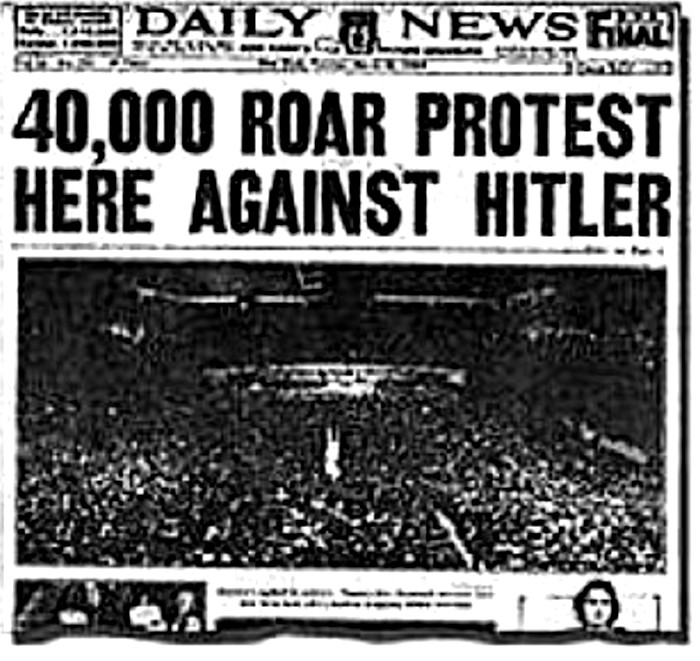
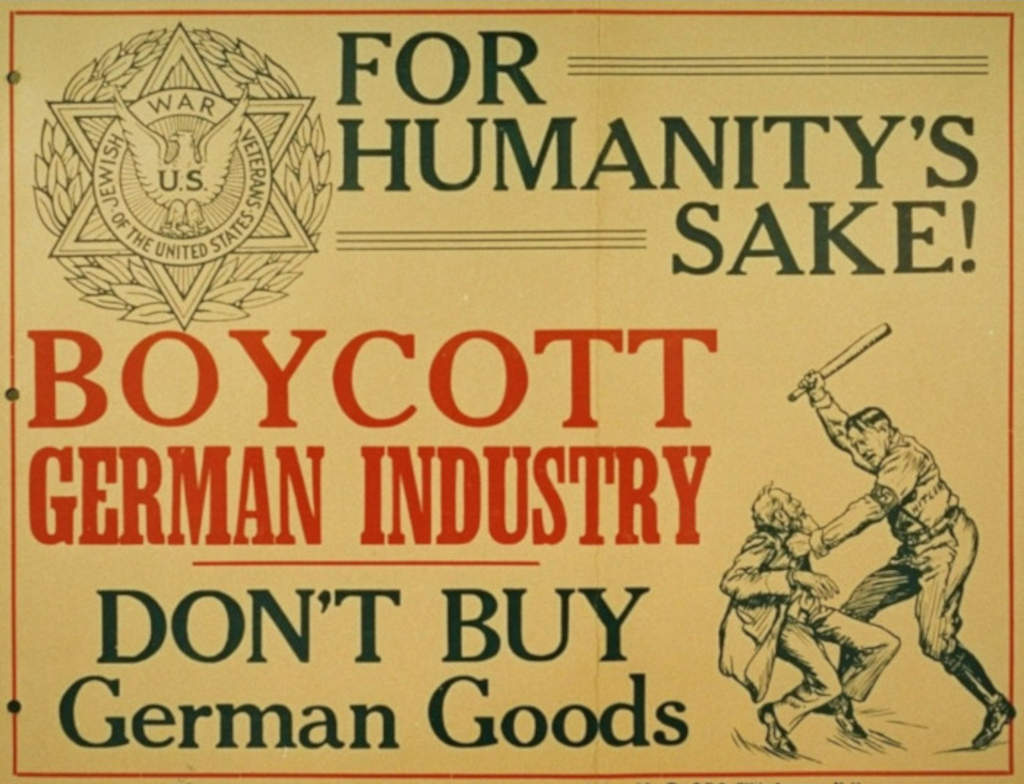
Despite all this, leaders of the Jewish community refused to relent. On March 27, there were simultaneous protest rallies at Madison Square Garden, in Chicago, Boston, Philadelphia, Baltimore, Cleveland and 70 other locations. The Jew York rally was broadcast worldwide. The bottom line is that “the New Germany” was declared to be an enemy of Jewish interests and thus needed to be economically strangled. This was before Hitler decided to boycott Jewish goods. It was in direct response to this that the German government announced a one-day boycott of Jewish businesses in Germany on April 1. German Propaganda Minister Dr. Joseph Goebbels announced that if, after the one-day boycott, there were no further attacks on Germany, the boycott would be stopped. Hitler himself responded to the Jewish boycott and the threats in a speech on March 28 — four days after the original Jewish declaration of war — saying:
“Now that the domestic enemies of the nation have been eliminated by the Volk itself, what we have long been waiting for will not come to pass.”.
“The communist and Marxist criminals and their jewish-intellectual instigators, who, having made off with their capital stocks across the border in the nick of time, are now unfolding an unscrupulous, treasonous campaign of agitation against the German Volk as a whole from there….”.
“Lies and slander of positively hair-raising perversity are being launched about Germany. Horror stories of dismembered Jewish corpses, gouged out eyes and hacked off hands are circulating for the purpose of defaming the German Volk in the world for the second time, just as they had succeeded in doing once before in 1914.”.
Thus, the fact — one conveniently left out of nearly all history on the subject — is that Hitler’s March 28, 1933 boycott order was in direct response to the declaration of war on Germany by the worldwide Jewish leadership just four days earlier. Today, Hitler’s boycott order is described as a naked act of aggression, yet the full circumstances leading up to his order are seldom described in even the most ponderous and detailed histories of “the Holocaust”. Not even Saul Friedlander in his otherwise comprehensive overview of German policy, Nazi Germany and the Jews, mentions the fact that the psychopathic Jewish declaration of war and boycott preceded Hitler’s speech of March 28, 1933. Discerning readers would be wise to ask why Friedlander felt this item of history so irrelevant.
The simple fact is that it was organized Jewry as a political entity — and not even the “German” Jewish community per se — that actually initiated the first shot in the war with Germany”.
“Germany’s response was a defensive — not an offensive — measure. Were that fact widely known today, it would cast new light on the subsequent events that ultimately led to the world-wide conflagration that followed.”.
To understand Hitler’s reaction to the psychotic Jewish declaration of war, it is vital to understand the critical state of the German economy at the time. In 1933, the German economy was in shambles. Some 3 million Germans were on public assistance, with a total of 6 million unemployed. Hyperinflation had destroyed the economic vitality of the German nation. Furthermore, the anti-German propaganda pouring out of the global press strengthened the resolve of Germany’s enemies, especially the Poles and their hawkish military high command.
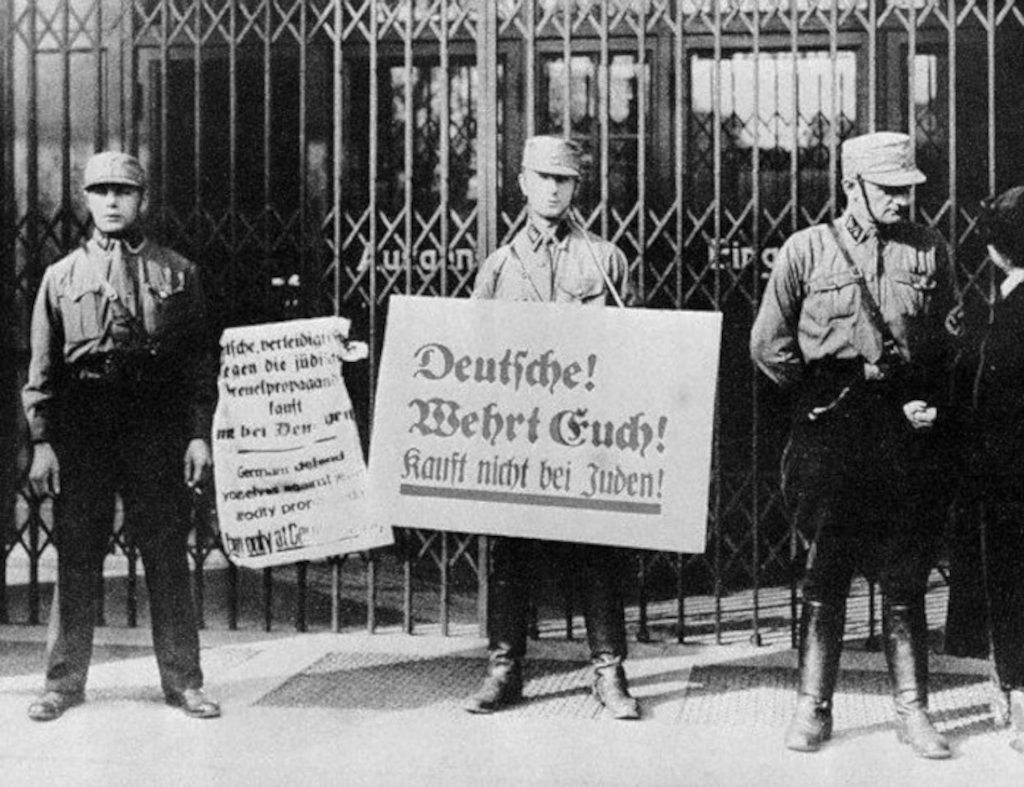
The Jewish leaders were not bluffing. The boycott was an act of war not solely in metaphor: it was a means, well crafted, to destroy Germany as a political, social and economic entity. The long-term purpose of the Jewish boycott against Germany was to bankrupt her with respect to the reparation payments imposed on Germany after World War I and to keep Germany demilitarized and vulnerable. The boycott, in fact, was quite crippling to Germany. Jewish scholars such as Edwin Black have reported that, in response to the boycott, German exports were cut by 10 percent, and that many were demanding seizing German assets in foreign countries (Edwin Black, The Transfer Agreement — The Untold Story of the Secret Pact between the Third Reich and Jewish Palestine, New York, 1984).

Luis Nizers describes viability of extermination and sterilization then elaborates outbreeding birthrate of “pure Germans” to neutralize aggressiveness; medicines without cure and compulsory migration. He recommends revitalization of a democratic culture be implemented by every conceivable instrument for invading the mind. Nizer outlined the possible function of the church, motion picture, theatre, radio, the press, and labour unions.
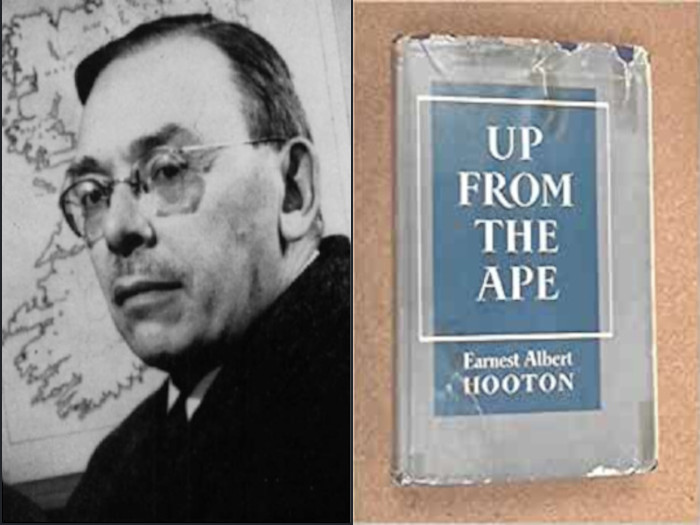
In Hooton's article “Breed war strain out of Germans”, New York daily newspaper Picture Magazine, 4. In January 1943, Earnest Hooton proposed to eradicate the German people by infiltrating them slowly with masses of non-European male immigrants, thereby breeding “war strains” out of them. Hooton sat on the Committee on the Negro, a group that “focused on the anatomy of blacks and reflected the racism of the time.”.
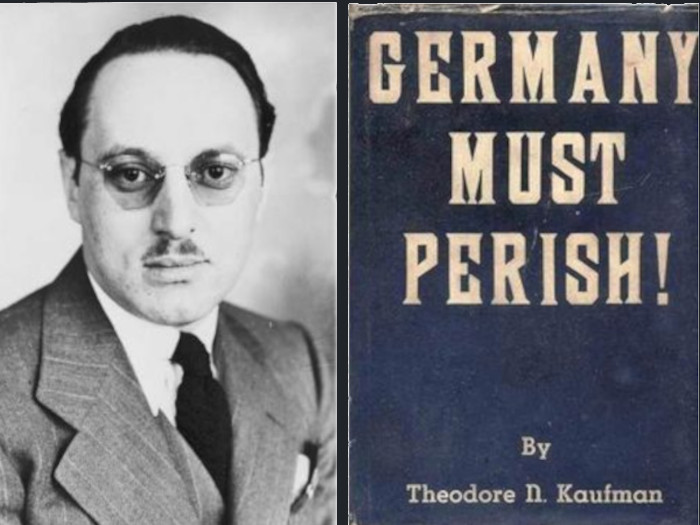
Theodore N. Kaufman advocated the genocide through sterilisation of all Germans and the territorial dismemberment of Germany. Kaufmann was an American Jewish businessman and writer known for his racist and eliminationist views on Germans. "Thanks to the Jew Kaufmann, we Germans know only too well what to expect in case of defeat." - Dr. Goebbels.
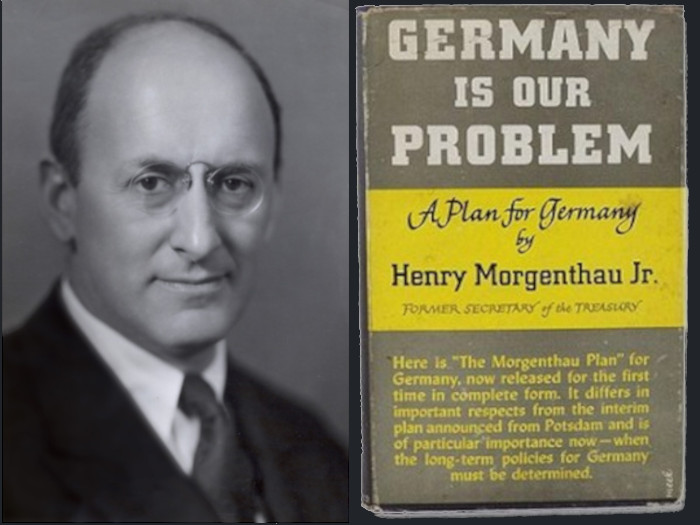
Henry Morgenthau Jr's plan was to demilitarize, deinductrialize and partition Germany and send the German people into slavery for other nations. Morgenthau remained for several years an active member of the group campaigning for a "harsh peace" for Germany. Morgenthau was the United States Secretary of the Treasury during most of the administration of Franklin D. Roosevelt.
Nakam
Nakam (Hebrew: 'revenge') was a paramilitary organization of about fifty Holocaust survivors who, after 1945, sought revenge for the murder of "six million Jews" during "the Holocaust". Led by Abba Kovner, the group sought to kill six million Germans in a form of indiscriminate revenge, "a nation for a nation". Kovner went to Mandatory Palestine in order to secure large quantities of poison for poisoning water mains to kill large numbers of Germans. His followers infiltrated the water system of Nuremberg. However, Kovner was arrested upon arrival in the British zone of occupied Germany and threw the poison overboard.

Following this failure, Nakam turned their attention to "Plan B", targeting German prisoners of war held by the United States military in the American zone. They obtained arsenic locally and infiltrated the bakeries that supplied these prison camps. The conspirators poisoned 3,000 loaves of bread at Konsum-Genossenschaftsbäckerei (Consumer Cooperative Bakery) in Nuremberg, which sickened more than 2,000 German prisoners of war at Langwasser internment camp. Although Nakam is considered by some to have been a terrorist organization, German public prosecutors dismissed a case against two of its members in 2000 due to the "unusual circumstances".
Kovner was hidden with several Jewish friends in a Dominican convent headed by Polish Catholic nun Anna Borkowska in Vilnius city's suburbs.
About 30 former Nakam operatives boarded the ship Biriya on 23 June 1946 and arrived by the end of July following brief detention by the British authorities. They received a warm welcome at Kovner's kibbutz, Ein HaHoresh, from leading members of the Haganah and the Israeli Labor Party, and were invited to travel through the country. Although Kovner, and the majority of the operatives, considered that the time for revenge had passed, a small group led by Bolek Ben-Ya'akov returned to Europe to continue the mission. Nine other Nakam operatives broke away in the spring of 1947 and returned to Europe the following year, helped by Labor Party politician Abba Hushi.
The attacks on Germany did not cease. The psychopathic worldwide Jewish leadership became ever the more belligerent and worked itself into a frenzy. An International Jewish Boycott Conference was held in Amsterdam to coordinate the ongoing boycott campaign. It was held under the auspices of the self-styled World Jewish Economic Federation, of which famous Jew York City attorney and long-time political power broker, Jew Samuel Untermyer, was elected president. Upon returning to the United States in the wake of the conference, Untermyer delivered a speech over WABC Radio (New York), a transcript of which was printed in The Jew York Times on August 7, 1933. Untermyer’s inflammatory psychotic oratory called for a “sacred war” against Germany, making the flat-out allegation that Germany was engaged in a plan to “exterminate the Jews.” He said (in part):
“…Germany [has] been converted from a nation of culture into a veritable hell of cruel and savage beasts. We owe it not only to our persecuted brethren, but to the entire world, to now strike in self-defence a blow that will free humanity from a repetition of this incredible outrage…. Now or never must all the nations of the earth make common cause against the… slaughter, starvation and annihilation… fiendish torture, cruelty and persecution that are being inflicted day by day upon these men, women and children…. When the tale is told… the world will confront a picture so fearful in its barbarous cruelty that the hell of war and the alleged Belgian atrocities pale into insignificance as compared to this devilishly, deliberately, cold-bloodedly planned and already partially executed campaign for the extermination of a proud, gentle, loyal, law-abiding people… The Jews are the aristocrats of the world. From time immemorial, they have been persecuted and have seen their persecutors come and go. They alone have survived. And so will history repeat itself, but that furnishes no reason why we should permit this reversion of a once great nation to the Dark Ages or fail to rescue these 600,000 human souls from the tortures of hell…. …What we are proposing, and have already gone far toward doing, is to prosecute a purely defensive economic boycott that will undermine the Hitler regime and bring the German people to their senses by destroying their export trade on which their very existence depends. …We propose to and are organizing world opinion to express itself in the only way Germany can be made to understand….”.
Untermyer then proceeded to provide his listeners with a wholly and typically Jewish fraudulent history of the circumstances of the German boycott and how it originated. He also proclaimed that the Germans were bent on a plan to “exterminate the Jews”:
“The Hitler regime originated and are fiendishly prosecuting their boycott to exterminate the Jews by placarding Jewish shops, warning Germans against dealing with them, by imprisoning Jewish shopkeepers and parading them through the streets by the hundreds under guard of ‘Nazi’ troops for the sole crime of being Jews, by ejecting them from the learned professions in which many of them had attained eminence, by excluding their children from the schools, their men from the labour unions, closing against them every avenue of livelihood, locking them in vile concentration camps and starving and torturing them without cause and resorting to every other conceivable form of torture, inhuman beyond conception, until suicide has become their only means of escape, and all solely because they are, or their remote ancestors were Jews, and all with the avowed object of exterminating them.”.
Untermyer concluded his largely fantastic and hysterical address by declaring that with the support of “Christian friends,… we will drive the last nail in the coffin of bigotry and fanaticism….”
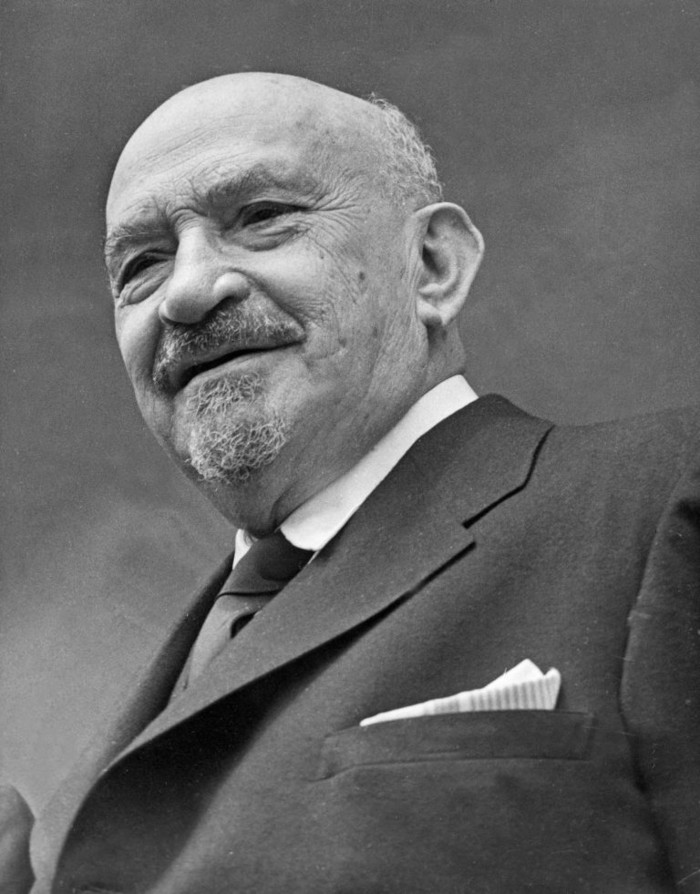
Here’s the story behind the story: Chaim Weizmann (above), president of both the international “Jewish Agency” and of the World Zionist Organization (and later Israel’s first president), told British Prime Minister Neville Chamberlain in a letter published in The London Times on September 6, 1939 that:
I wish to confirm, in the most explicit manner, the declarations which I and my colleagues have made during the last month, and especially in the last week, that the Jews stand by Great Britain and will fight on the side of the democracies. Our urgent desire is to give effect to these declarations [against Germany].
We wish to do so in a way entirely consonant with the general scheme of British action, and therefore would place ourselves, in matters big and small, under the coordinating direction of His Majesty’s Government. The Jewish Agency is ready to enter into immediate arrangements for utilizing Jewish manpower, technical ability, resources, etc.
That his allegations against Germany were made long before even Jewish historians today claim there were any “gas chambers” or even a plan to “exterminate” the Jews, displays the typically deceptive nature of the Jewish propaganda campaign confronting Germany. However, during this same period there were some unusual developments at work: The spring of 1933 also witnessed the beginning of a period of private cooperation between the German government and the Zionist movement in Germany and Palestine (and actually worldwide) to increase the flow of “German”-Jewish immigrants and capital to Palestine.
The modern-day supporters of Zionist Israel and many historians have succeeded in keeping this “Nazi”-Zionist pact a secret to the general public for decades and while most Americans have no concept of the possibility that there could have been outright collaboration between the National Socialist leadership and the founders of what became the bandit state of Israel, the truth has begun to emerge. Dissident Jew writer Lenni Brennar’s Zionism In the Age of the Dictators, published by a small press and not given the publicity it deserves by the so-called “mainstream” media (which is otherwise obsessed with the Holocaust era), was perhaps the first major endeavour in this realm.
In response to Brennar and others, the Zionist reaction has usually consisted of declarations that their collaboration with NS Germany was undertaken solely to save the lives of filthy lying Jews. But the collaboration was all the more remarkable because it took place at a time when many disgusting Jews and Jewish organizations demanded a boycott of Germany. To the Zionist leaders, Hitler’s assumption of power held out the possibility of a flow of immigrants to Palestine. Previously, the majority of “German” Jews, who identified themselves as “Germans,” had little sympathy with the Zionist cause of promoting the ingathering of world Jewry to Palestine. But the Zionists saw that only the appropriately anti-Semitic Hitler was likely to push the anti-zionist “German” Jews into the arms of Zionism.
For all the modern-day wailing by worldwide supporters of Israel (not to mention the Israelis themselves) about “the Holohoax,” they neglect to mention that making the situation in Germany as uncomfortable for the Jews as possible — in cooperation with German National Socialism — was part of the plan. This was the genesis of the so-called Transfer Agreement, the agreement between Zionist Jews and the National Socialist government to expel “German” Jewry to Palestine. According to Jew historian Walter Laqueur and many others, “German” Jews were far from convinced that immigration to Palestine was the answer. Furthermore, although the majority of “German” Jews refused to consider the Zionists as their political leaders, it is clear that Hitler protected and cooperated with the Zionists for the purposes of implementing the final solution: the mass transfer of unwanted parasitic Jews to the Middle East.
Edwin Black, in his massive tome The Transfer Agreement (Macmillan, 1984), stated that although most Jews did not want to flee to Palestine at all, due to the Zionist movement’s influence within National Socialist Germany a filthy Jew’s best chance of getting out of Germany was by emigrating to Palestine. In other words, the Transfer Agreement itself mandated that Jewish capital could only go to Palestine. Thus, according to the Zionists, a filthy lying Jew could leave Germany only if he went to the Levant. The primary difficulty with the Transfer Agreement (or even the idea of such an agreement) was that the English [!!!; Scriptorium] were demanding, as a condition of immigration, that each immigrant pay 1,000 pounds sterling upon arrival in Haifa or elsewhere. The difficulty was that such hard currency was nearly impossible to come by in a cash-strapped and radically inflationary Germany. This was the main idea behind the final Transfer Agreement. Laqueur writes:
“A large German bank would freeze funds paid in by immigrants in blocked accounts for German exporters, while a bank in Palestine would control the sale of German goods to Palestine, thereby providing the immigrants with the necessary foreign currency on the spot. Sam Cohen, co-owner of Hanoaiah Ltd. and initiator of the transfer endeavours, was, however, subjected to long-lasting objections from his own people and finally had to concede that such a transfer agreement could only be concluded on a much higher level with a bank of its own rather than that of a private company. The renowned Anglo-Palestine Bank in London would be included in this transfer deal and create a trust company for [this] purpose.”.
Of course, this is of major historical importance in dealing with the relationship between Zionism and National Socialism in Germany in the 1930s. The relationship was not one merely of mutual interest and political favouritism on the part of Hitler, but a close financial relationship with German banking families and financial institutions as well. Black writes:
It was one thing for the Zionists to subvert the anti-’Nazi’ boycott. Zionism needed to transfer out the capital of ‘German’ Jews, and merchandise was the only available medium. But soon Zionist leaders understood that the success of the future Jewish Palestinian economy would be inextricably bound up with the survival of the ‘Nazi’ economy. So, the Zionist leadership was compelled to go further. The German economy would have to be safeguarded, stabilized, and if necessary reinforced. Hence, the ‘Nazi’ party and the Zionist organizers shared a common stake in the recovery of Germany.
Thus, one sees a radical fissure in world Jewry around 1933 and beyond. There were, first, the non-zionist Jews (specifically the World Jewish Congress founded in 1933), who, on the one hand, demanded the boycott and eventual destruction of Germany. Black notes that many of these people were not just in Jew York and Amsterdam, but a major source for this also came from Palestine proper. On the other hand, one can see the judicious use of such feelings by the Zionists for the sake of eventual resettlement in Palestine. In other words, it can be said (and Black does hint at this) that Zionism believed that, since the dirty Jews would be moving to the Levant, capital flight would be necessary for any new economy to function.
The result was the understanding that Zionism would have to ally itself with National Socialism, so that the German government would not impede the flow of Jewish capital out of the country. It served the Zionist interests at the time that Jews be loud in their denunciations of German practices against the pathetic Jews to scare them into the Levant, but, on the other hand, Laqueur states that “The Zionists became motivated not to jeopardize the German economy or currency.” In other words, the Zionist leadership of the Jewish Diaspora was one of subterfuge and underhandedness, with only the advent of German hostility towards Jewry convincing the world’s parasitic Jews that immigration was the only escape.
The fact is that the ultimate establishment of the bandit state of Israel was based on fraud. The Zionists did not represent anything more than a small minority of “German” Jews in 1933. On the one hand, the Zionist fathers of Israel wanted loud denunciations of Germany’s “cruelties” to the world’s Jews while at the same time demanding moderation so that the National Socialist government would remain stable, financially and politically. Thus, Zionism boycotted the boycott. For all intents and purposes, the National Socialist government was the best thing to happen to Zionism in its history, for it “proved” to the Jewish community that Europeans were irredeemably anti-jewish and that Palestine was the only answer:
Zionism came to represent the overwhelming majority of Jews solely by trickery and “cooperation” with Adolf Hitler. For the Zionists, both the denunciations of German policies towards Jews (to keep Jews frightened), plus the reinvigoration of the German economy (for the sake of final resettlement) was imperative for the Zionist movement. Ironically, today, the deceiving Zionist leaders of Israel complain bitterly about the horrific and inhuman regime of the National Socialists. So, the fraud continues.
Alliance
Japan
The Tripartite Pact, also known as the Berlin Pact, was an agreement between Germany, Italy, and Japan signed in Berlin on 27 September 1940 by, respectively, Joachim von Ribbentrop, Galeazzo Ciano and Saburō Kurusu. Although Germany and Japan technically became allies with the signing of Anti-Comintern Pact of 1936, the 1939 Molotov–Ribbentrop Pact between Germany and the Soviet Union came as a surprise to Japan. In November 1939, Germany and Japan signed the “Agreement for Cultural Cooperation between Japan and Germany”.
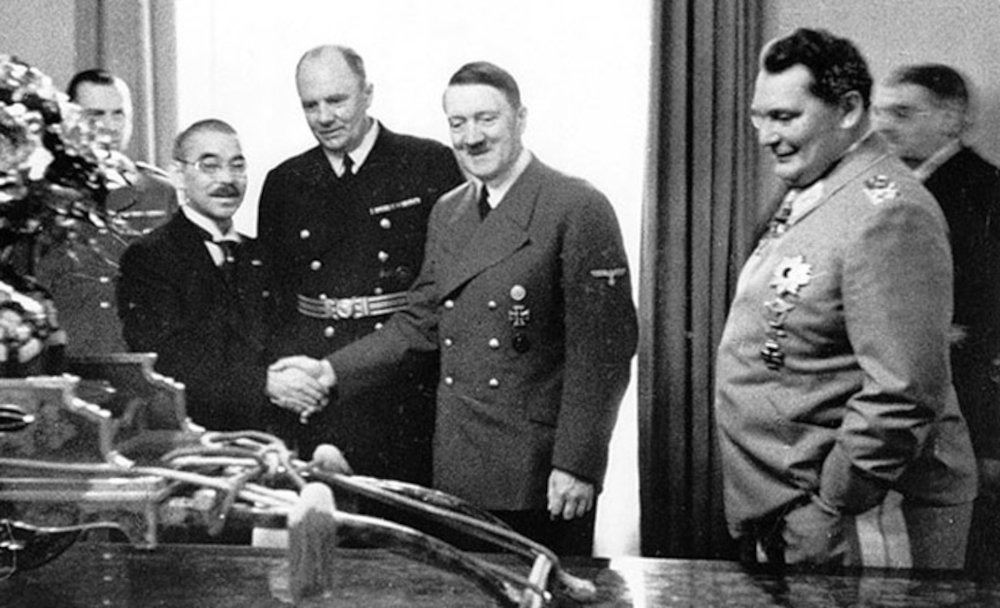
In a ceremonial speech following the signing of the pact on 27 September, Ribbentrop may have suggested that the signatories were open to accepting new signatories in the future. The Deutsche Allgemeine Zeitung (DAZ) reported his words as follows: The purpose of the Pact is, above all things, to help restore peace to the world as quickly as possible. Therefore, any other State which wishes to accede to this bloc (der diesem Block beitreten will), with the intention of contributing to the restoration of peaceful conditions, will be sincerely and gratefully made welcome and will participate in the economic and political reorganization.
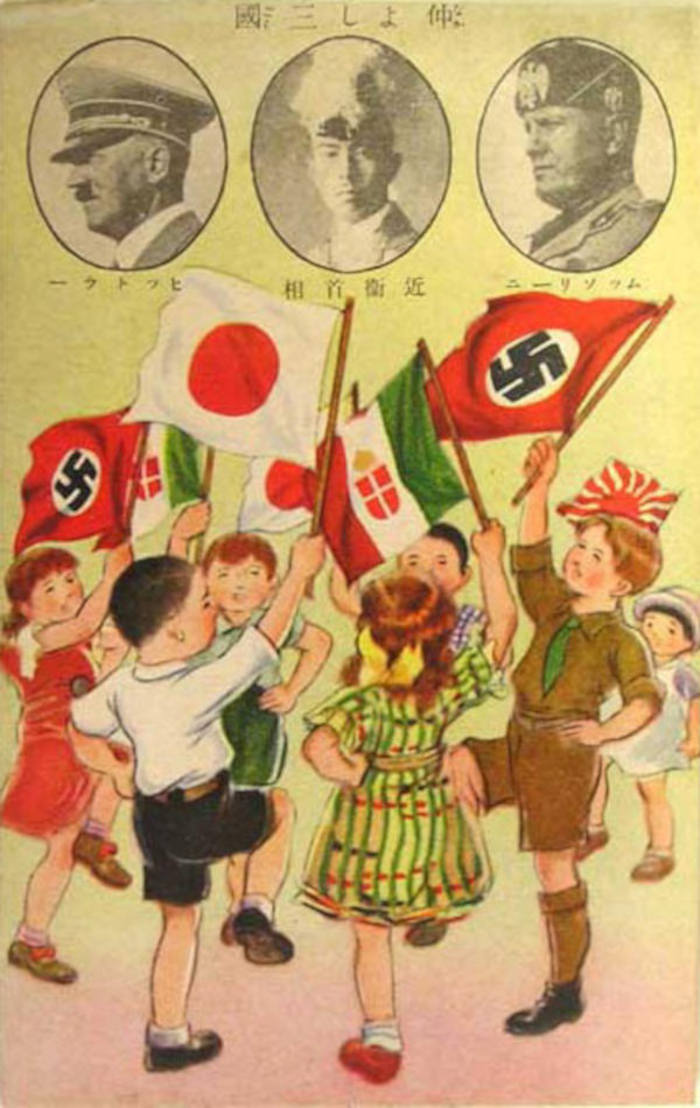
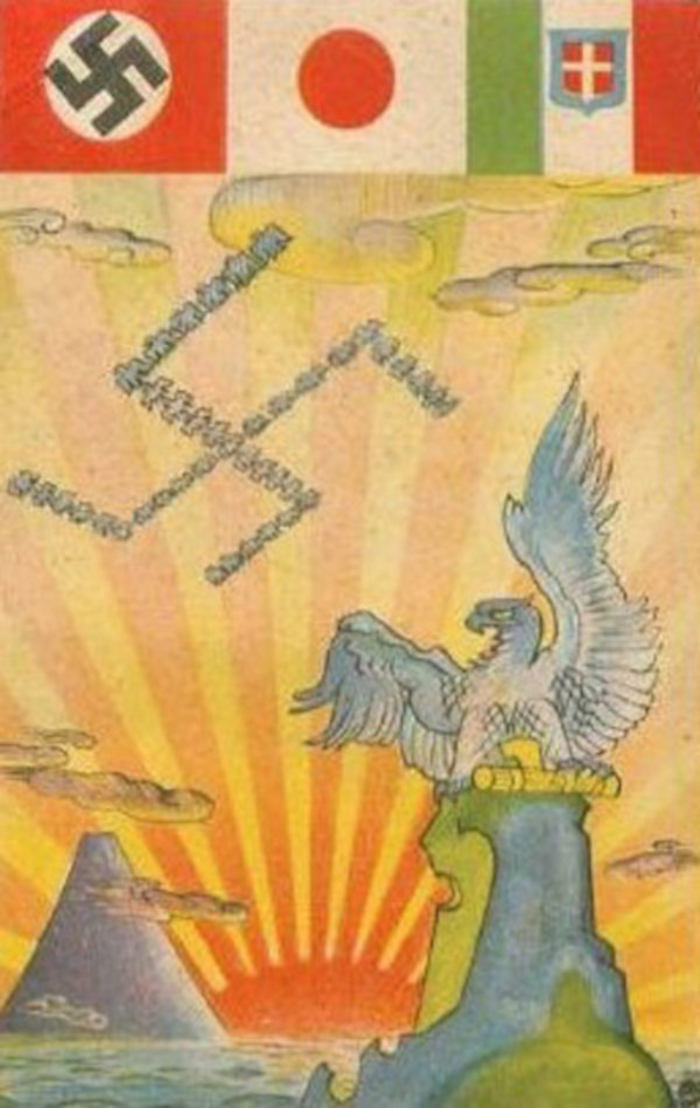
Hitler Youth travelled by means of the Trans-Siberian Railway, with the outbreak of the war in Europe in September 1939 ocean travel from Germany to Japan became impossible so thus the railway became the only remaining connection between Germany and Japan. Upon arriving in Japan, the delegation of the Hitler Youth was greeted with music and flags displaying both the swastika and the rising sun. The head of the delegation was received by Prime Minister Konoe. According to an article in the Völkischer Beobachter, the delegates thus attained an understanding of how the education of Japan's youth was geared towards establishing a “mentality of defence”.

During their six-week tour of the country, the delegation's members traveled from Beppu to Hokkaido, visiting schools, barracks, and the mythological birthplace of the family of the tenno. In Tokyo, they met the respective ministers of war, foreign affairs, and culture and education. There were meetings as well with industrial leaders, heads of youth organizations, and the deputy chief of the admiralty. They visited universities, the Meiji and Yasukuni shrine, and attended receptions hosted by the German embassy and the Japanese German Cultural Institute.
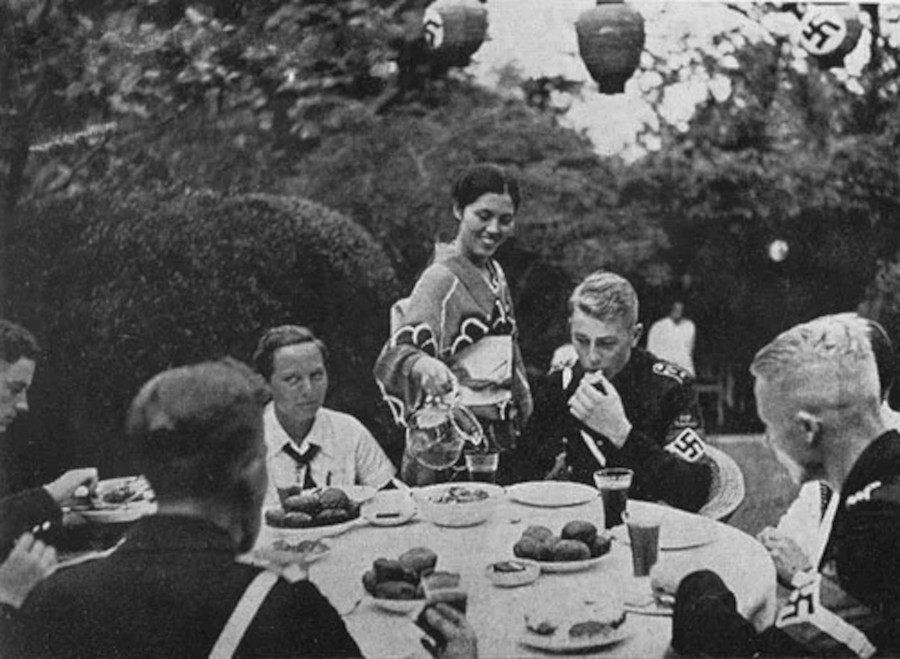
The delegation was presented on Japanese radio several times and, as the first delegation of the Hitler Youth had done during its visit to Japan in 1938, performed songs of the Hitler Youth.5 Its members also recorded the German version of a Japanese song written on the occasion of the signing of the Tripartite Pact by Yamada Kosaku, one of the best-known Japanese composers of the time.
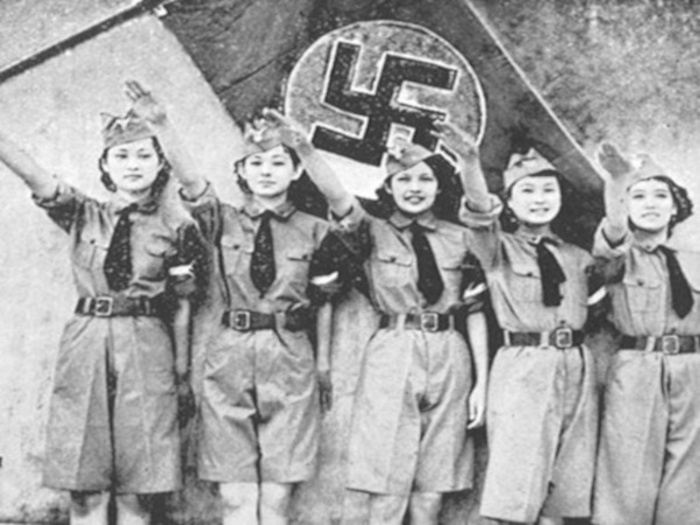
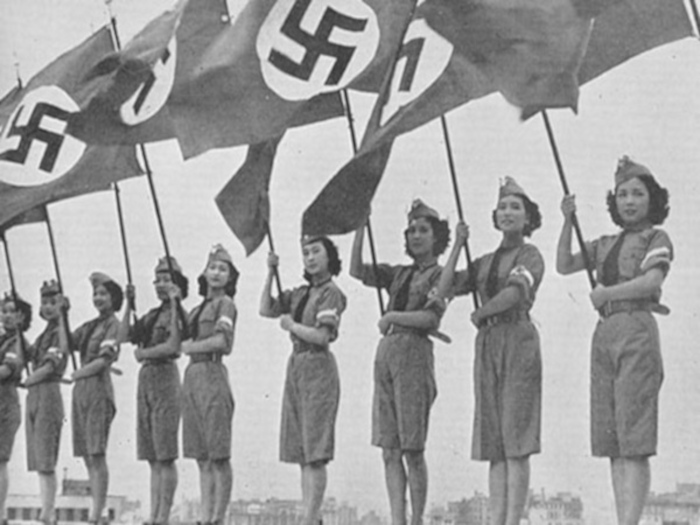
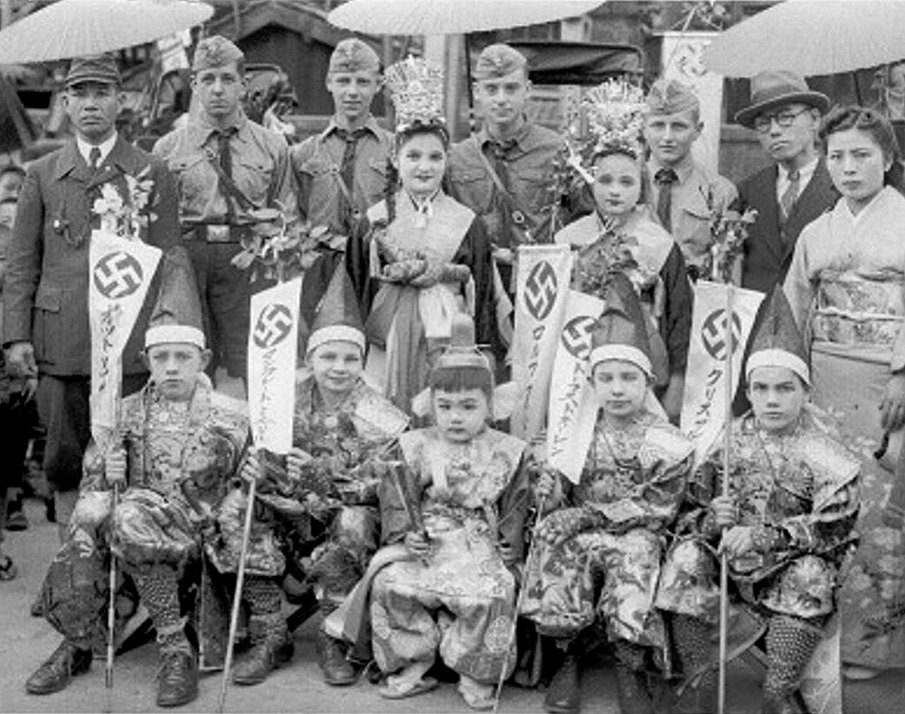
Allied Invasion of Japan
Even before the surrender of NSDAP Germany on May 8, 1945, plans were underway for the largest operation of the Pacific War, Operation Downfall, the Allied invasion of Japan. Wright and Shockley estimated the invading Allies would suffer between 1.7 and 4 million casualties in such a scenario, of whom between 400,000 and 800,000 would be dead, while Japanese fatalities would have been around 5 to 10 million. Marshall began contemplating the use of a weapon that was “readily available and which assuredly can decrease the cost in American lives”: poison gas. Quantities of phosgene, mustard gas, tear gas and cyanogen chloride were moved to Luzon from stockpiles in Australia and New Guinea in preparation for Operation Olympic, and MacArthur ensured that Chemical Warfare Service units were trained in their use. Consideration was also given to using biological weapons against Japan.

The firebombing of Tokyo, codenamed Operation Meetinghouse, on March 9–10 killed an estimated 100,000 people and destroyed 16 square miles (41 km2) of the city and 267,000 buildings in a single night. By May, 75 percent of bombs dropped were incendiaries designed to burn down Japan's “paper cities”. By mid-June, Japan's six largest cities had been devastated. Firebombing switched to smaller cities, with populations ranging from 60,000 to 350,000. According to Yuki Tanaka, the U.S. firebombed over a hundred Japanese towns and cities. These raids were devastating.
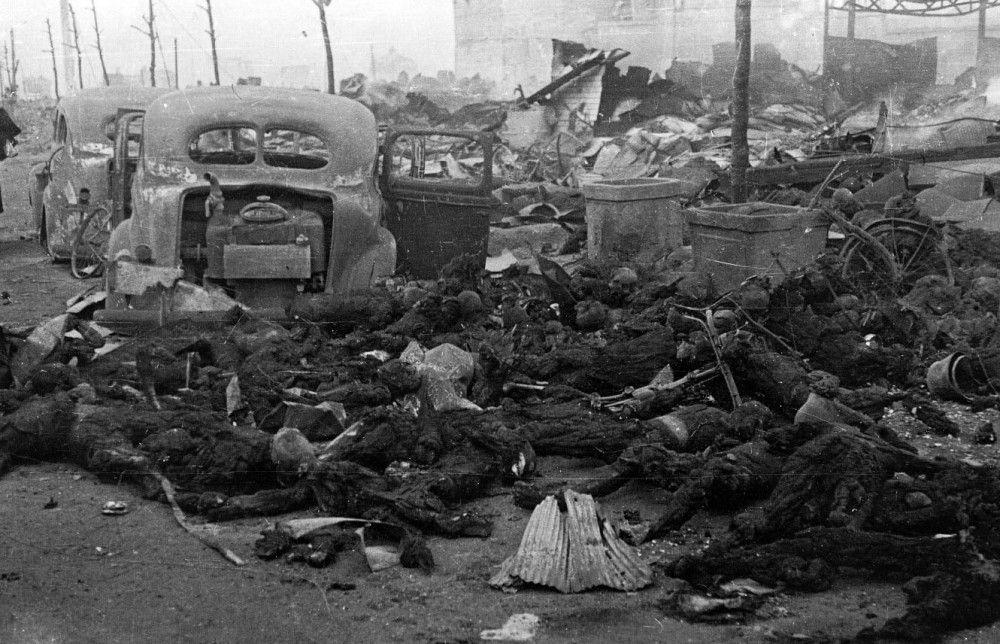
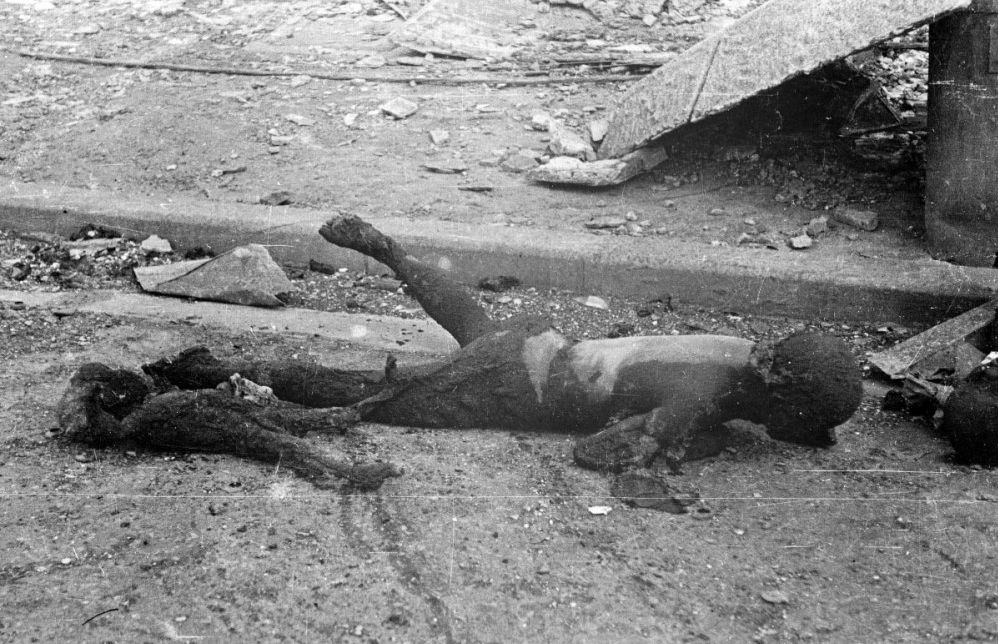
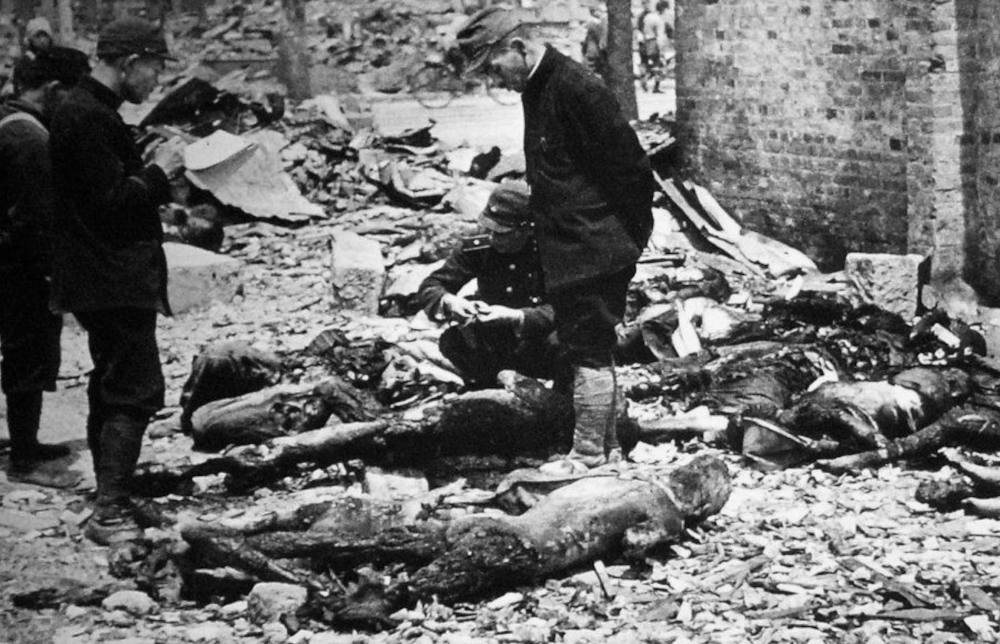
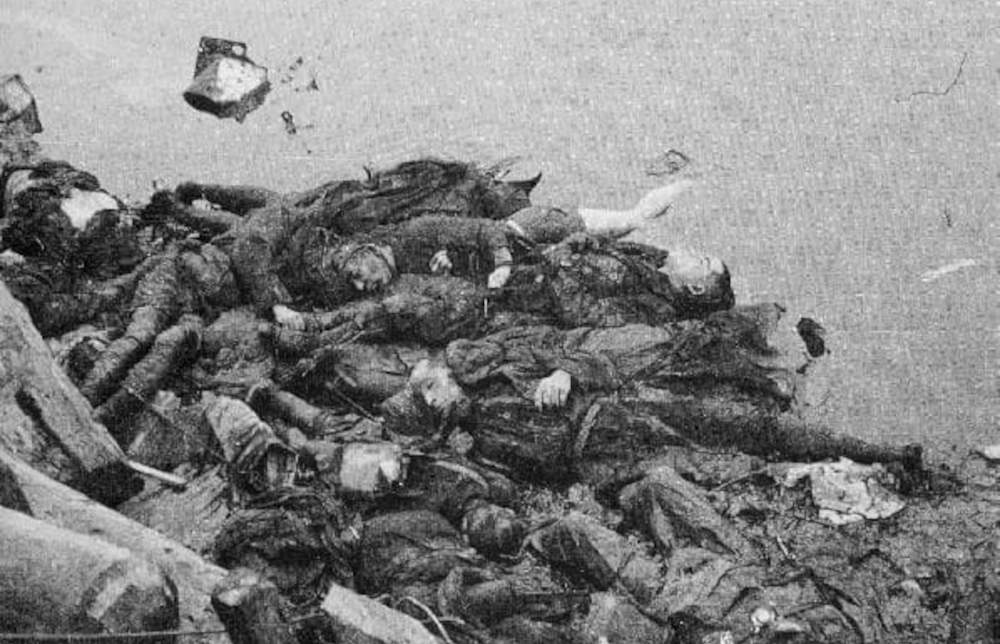
“I was only a child when soldiers with bayoneted rifles marched up our driveway, banged on our door, and ordered us out. I remember my mother's tears as we gathered what little we could carry, and then were sent to live for many weeks in a single cramped horse stall. Our bank accounts were frozen, our businesses shuttered, and our homes with most of our belongings were left behind, all because of what we looked like. A few months later, we were shipped off to the swamps, over a thousand miles away, by railcar. They placed in all one hundred twenty thousand of us inside barbed wire fences, machine guns pointed down at us from watch towers. We slept inside bug-infested barracks, ate in a noisy mess hall, and relieved ourselves in common latrines that had no walls between the stalls. We were denied adequate medicines, shelter, and supplies. I remember as a child looking up toward a U.S. flag in the room, as we recited the Pledge of Allegiance, those ironic words echoing, “with liberty, and justice for all. Executive Order 9066, signed by President Franklin Delano Roosevelt, was issued on the premise that anyone of Japanese descent could not be trusted and was to be treated as an enemy, even those of us who were American citizens, born in this land. We were viewed not as individual people, but as a yellow menace to be dealt with, and harshly. The guns pointed at us at every point reminded us that if we so much as tried to stand up for our dignity, there would be violent consequences. The order and the ensuing confinement was an egregious violation of the constitution and of due process as we were held, without trial and without charge, awaiting our fate”.
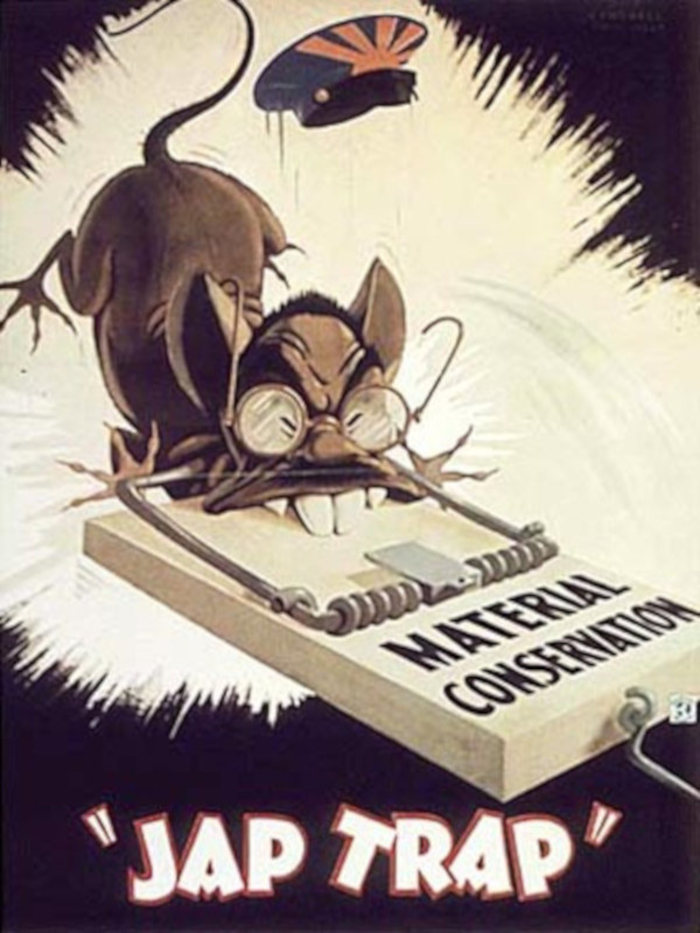
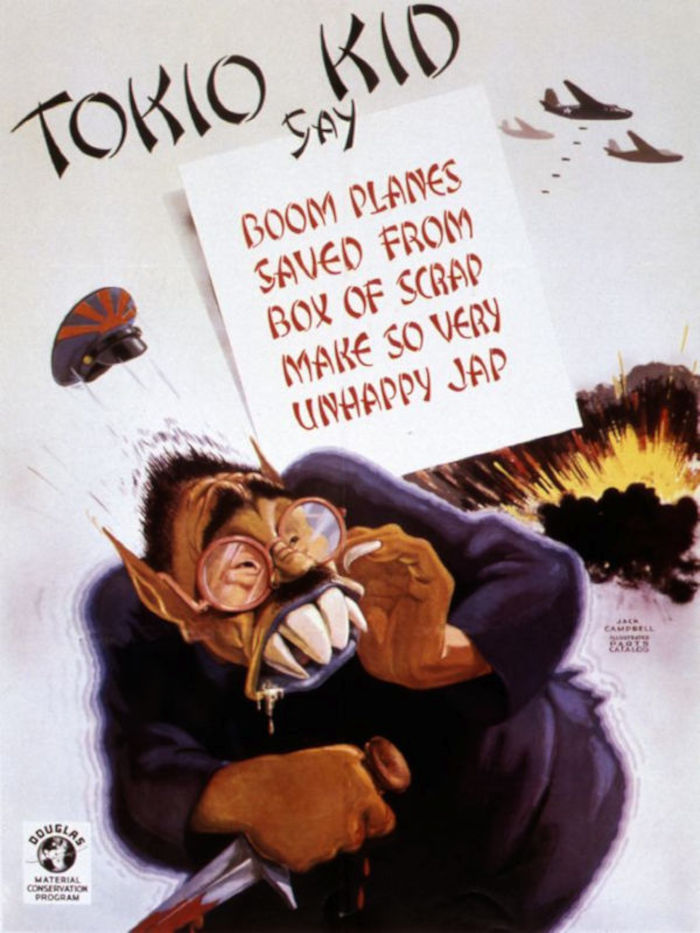
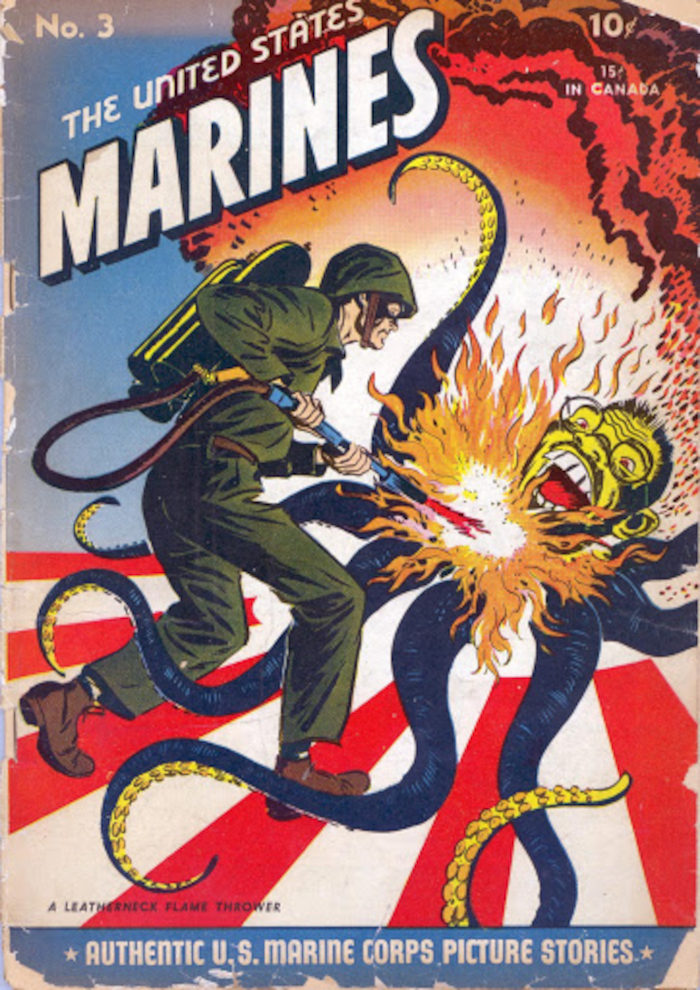
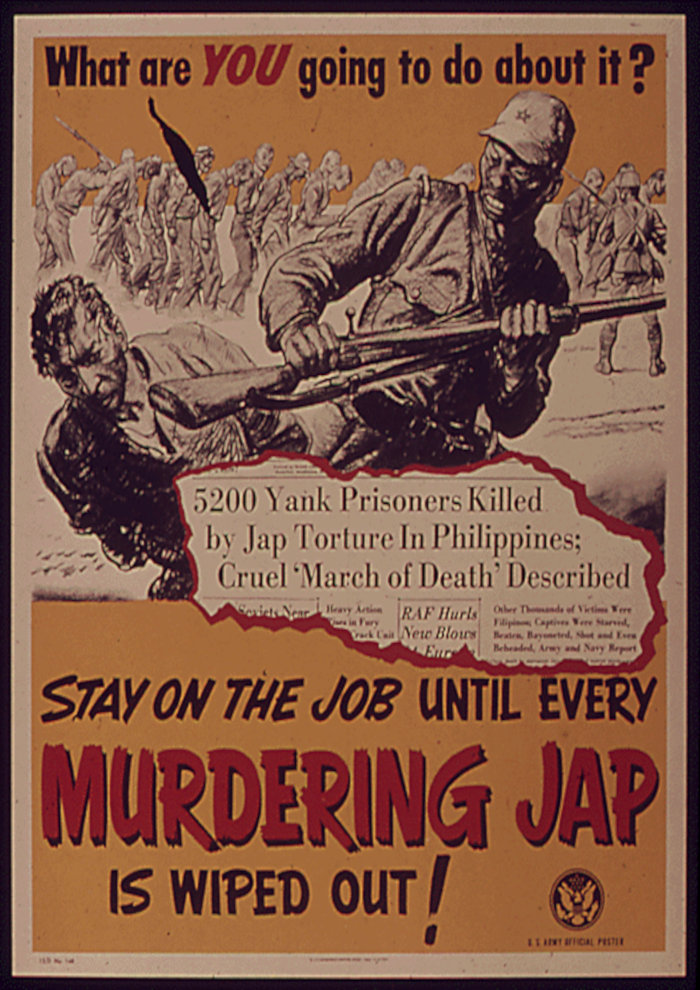
“I…the Marines disavowed a 'licence for hunting Japs' distributed by their recruiters in Chicago. Yet for the Seventh War Loan campaign the following spring the War Department produced for public viewing the film Action at Anguar, which had the narrator speak this line as viewers saw actual footage of Japanese soldiers burning alive: “By this time we had shot, blasted, or cooked six hundred of the little apes.”.
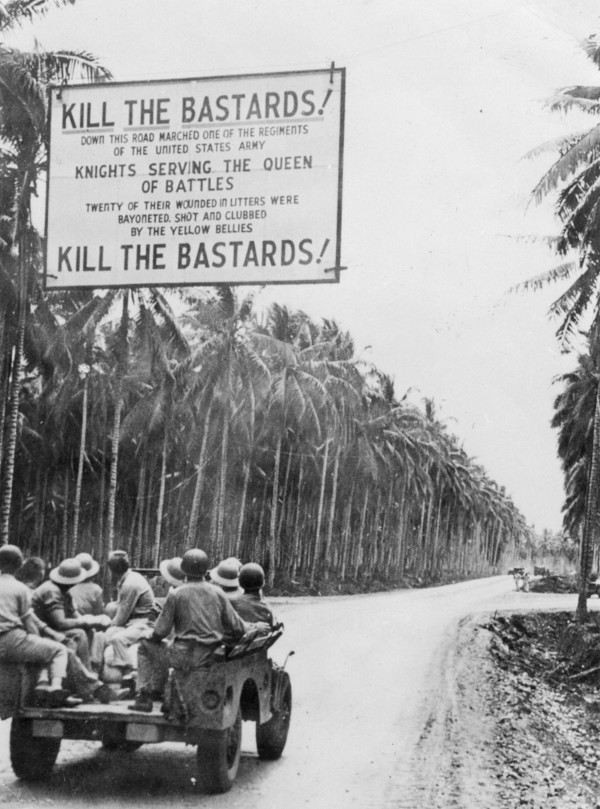
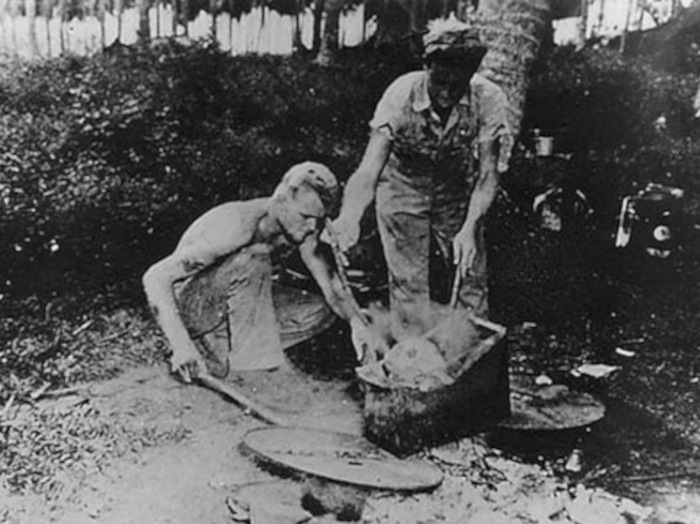

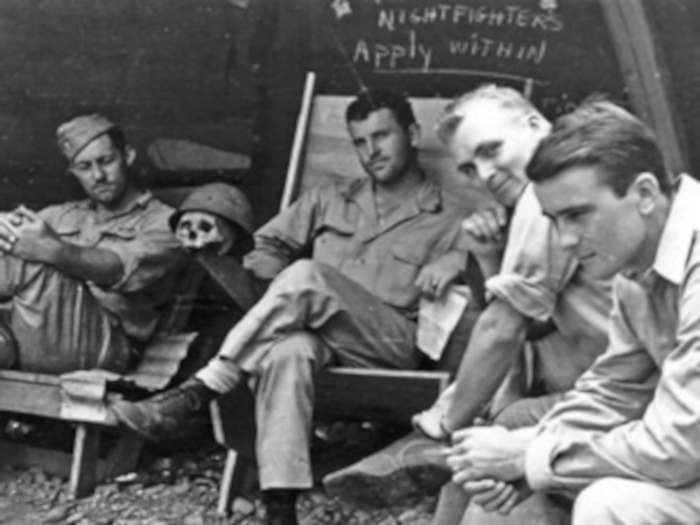
“We'd sneak up on those little lean-tos where the Jap soldiers were sleeping. The first time we went out on patrol, we figured we'd be nice and captured three of them and took them back to battalion headquarters. We checked on them the next day, and hell, the military had given them all new socks, shoes, underwear, caps, and dungarees -- the works. We'd been wearing the same rotting clothes for over a month. We thought, to hell with this. After we saw that, we didn't take any more prisoners”.
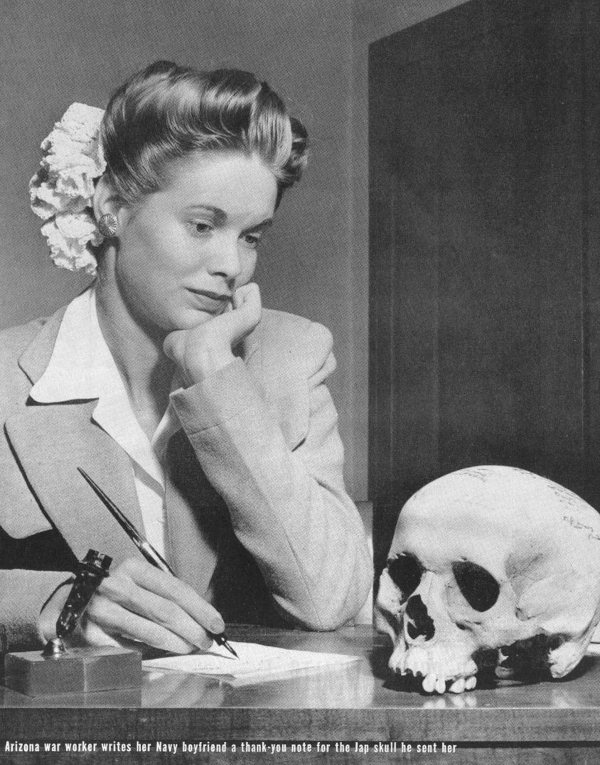
“But the Japanese wasn't dead. He had been wounded severely in the back and couldn't move his arms; otherwise he would have resisted to his last breath. The Japanese's mouth glowed with huge gold-crowned teeth, and his captor wanted them. He put the point of his Ka-Bar [combat knife] on the base of a tooth and hit the handle with the palm of his hand. Because the Japanese was kicking his feet and thrashing about, the knife point glanced off the tooth and sank deeply into the victim's mouth. The Marine cursed him and with a slash cut his cheeks open to each ear. He put his foot on the sufferer's lower jaw and tried again. Blood poured out of the soldier's mouth. He made a gurgling noise and thrashed wildly. I shouted, “Put the man out of his misery.” All I got for an answer was a cussing out. Another Marine ran up, put a bullet in the enemy soldier's brain, and ended his agony. The scavenger grumbled and continued extracting his prizes undisturbed”.
The real reason why America drove Japan into WWII was the same reason Britain and France declared war on Germany: money and influence behind Judaism. Japan was a rising power, as was Germany. In 1920, the famed author H.P. Lovecraft wrote an article called 'The Rising Tide of Color'. It is incredibly prophetic and provides an excellent snapshot of what was happening and more so what was to come:
“Whatever may be its ultimate goals, Japanese foreign policy has one minimum objective: Japan as hegemon of a Far East in which white influence shall have been reduced to a vanishing quantity. That is the bald truth of the matter — and no white man has any reason for getting indignant about it. Granted that Japanese aims endanger white vested interests in the Far East. Granted that this involves rivalry and perhaps war. That is no reason for striking a moral attitude and inveighing against Japanese “wickedness,” as many people are to-day doing. These mighty racial tides flow from the most elemental of vital urges: self-expansion and self-preservation. Both outward thrust of expanding life and counter-thrust of threatened life are equally normal phenomena. To condemn the former as “criminal” and the latter as “selfish” is either silly or hypocritical and tends to envenom with unnecessary rancor what objective fairness might keep a candid struggle, inevitable yet alleviated by mutual comprehension and respect. This is no mere plea for “sportsmanship”; it is a very practical matter. There are critical times ahead; times in which intense race-pressures will engender high tensions and perhaps wars. If men keep open minds and will eschew the temptation to regard those opposing their desires to defend or possess respectively as impious fiends, the struggles will lose half their bitterness, and the wars (if wars there must be) will be shorn of half their ferocity”.
Hiroshima and Nagasaki
The United States detonated two nuclear weapons over the Japanese cities of Hiroshima and Nagasaki on August 6 and 9, 1945, respectively. The two bombings killed between 129,000 and 226,000 people, most of whom were civilians, and remain the only uses of nuclear weapons in armed conflict. In the final year of World War II, the Allies prepared for a costly invasion of the Japanese mainland. This undertaking was preceded by a conventional and firebombing campaign that devastated 67 Japanese cities.

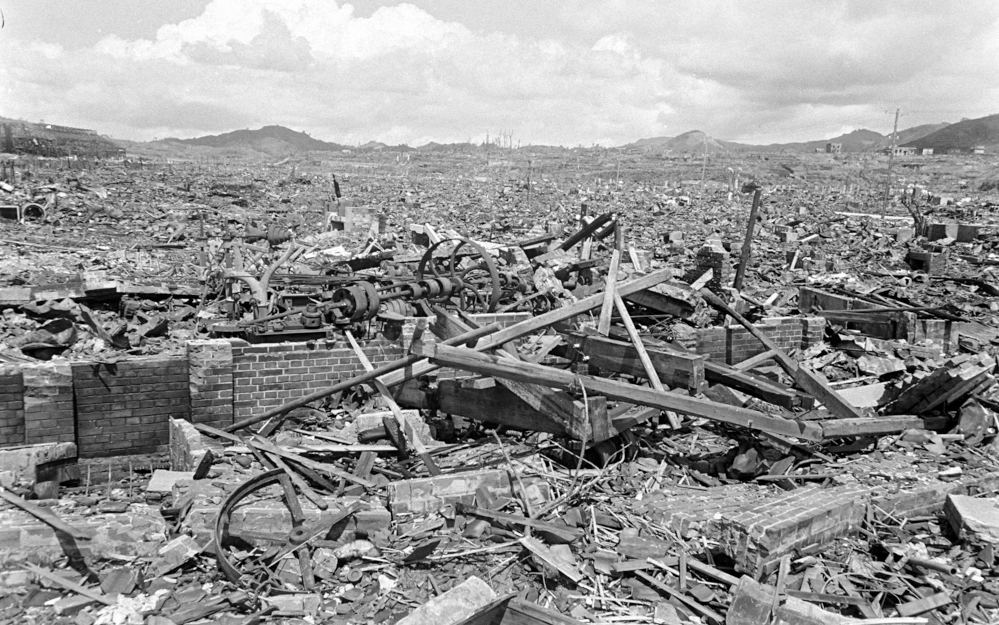
“When we were near in Hatchobori and since I had been holding my son in my arms, the young woman in front of me said, I will be getting off here. Please take this seat. We were just changing places when there was a strange smell and sound. It suddenly became dark, and before I knew it, I had jumped outside…. I held [my son] firmly and looked down on him. He had been standing by the window and I think fragments of glass had pierced his head. His face was a mess because of the blood flowing from his head. But he looked at my face and smiled. His smile has remained glued in my memory. He did not comprehend what had happened. And so, he looked at me and smiled at my face, which was all bloody. I had plenty of milk which he drank all throughout that day. I think my child sucked the poison right out of my body. And soon after that, he died. Yes, I think that he died for me”.
On July 26, Allied leaders issued the Potsdam Declaration, which outlined the terms of surrender for Japan. The declaration was presented as an ultimatum and stated that without a surrender, the Allies would attack Japan, resulting in “the inevitable and complete destruction of the Japanese armed forces and just as inevitably the utter devastation of the Japanese homeland”. The atomic bomb was not mentioned in the communiqué.

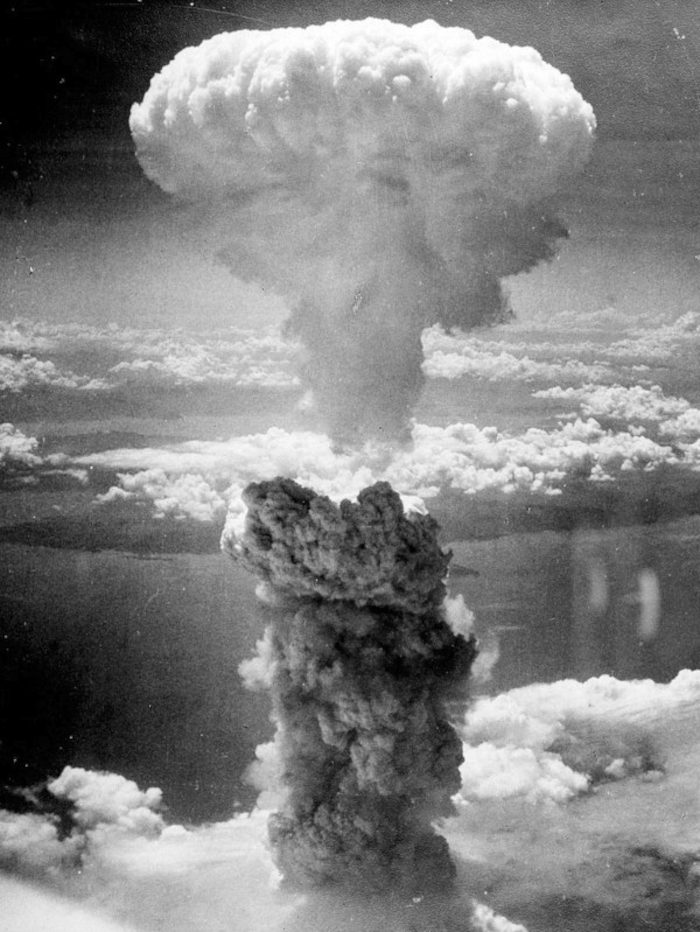
“Many people on the street were killed almost instantly. The fingertips of those dead bodies caught fire, and the fire gradually spread over their entire bodies from their fingers. A light gray liquid dripped down their hands, scorching their fingers. I, I was so shocked to know that fingers and bodies could be burned and deformed like that. I just couldn't believe it. It was horrible. And looking at it, it was more than painful for me to think how the fingers were burned, hands and fingers that would hold babies or turn pages, they just, they just burned away. For a few years after the A-bomb was dropped, I was terribly afraid of fire. I wasn't even able to get close to the fire because all my senses remembered how fearful and horrible the fire was, how hot the blaze was, and how hard it was to breathe the hot air. It was really hard to breathe. Maybe because the fire burned all the oxygen, I don't know. I could not open my eyes enough because of the smoke, which was everywhere. Not only me but everyone felt the same. And my parts were covered with holes”.
On July 28, Japanese papers reported that the declaration had been rejected by the Japanese government. That afternoon, Prime Minister Suzuki Kantarō declared at a press conference that the Potsdam Declaration was no more than a rehash (yakinaoshi) of the Cairo Declaration and that the government intended to ignore it (mokusatsu, “kill by silence”). At Potsdam, Truman agreed to a request from Winston Churchill that Britain be represented when the atomic bomb was dropped.
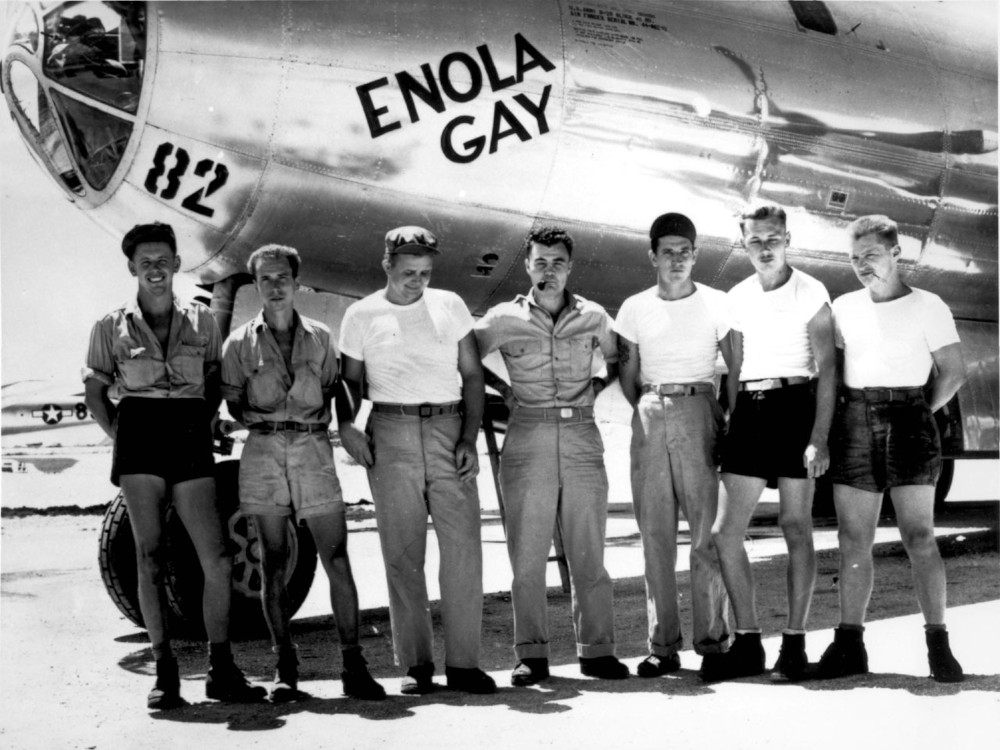
On August 6, the B-29 Enola Gay dropped a Little Boy on Hiroshima, an embarkation port and industrial centre that was the site of a major military headquarters. Three days later, to take advantage of favourable weather, the B-29 Bockscar dropped a Fat Man on Nagasaki, a major military port, one of Japan's largest shipbuilding and repair centres, and an important producer of naval ordnance. Over the next two to four months, the effects of the atomic bombings killed between 90,000 and 146,000 people in Hiroshima and 39,000 and 80,000 people in Nagasaki; roughly half occurred on the first day.
“If I had foreseen Hiroshima and Nagasaki, I would have torn up my formula in 1905”.
The bomb release by the Enola Gay at 08:15 (Hiroshima time) went as planned, and the Little Boy containing about 64 kg (141 lb) of uranium-235 took 44.4 seconds to fall from the aircraft flying at about 31,000 feet (9,400 m) to a detonation height of about 1,900 feet (580 m) above the city. Enola Gay traveled 11.5 mi (18.5 km) before it felt the shock waves from the blast. People on the ground reported a pika, a brilliant flash of light—followed by a don, a loud booming sound. Some 70,000–80,000 people, around 30 percent of the population of Hiroshima at the time, were killed by the blast and resultant firestorm, and another 70,000 were injured. It is estimated that as many as 20,000 Japanese military personnel were killed. U.S. surveys estimated that 4.7 square miles (12 km2) of the city were destroyed. Japanese officials determined that 69 percent of Hiroshima's buildings were destroyed and another 6 to 7 percent damaged
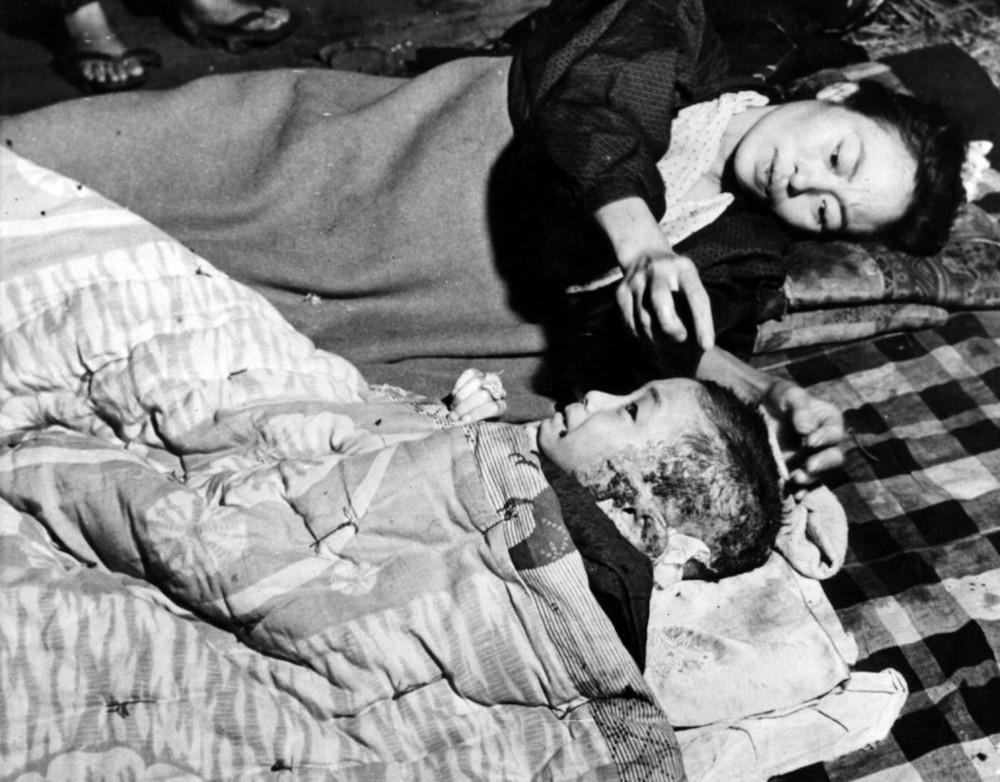
At the time of the attack, the population was approximately 340,000–350,000. Residents wondered why Hiroshima had been spared destruction by firebombing. Some speculated that the city was to be saved for U.S. occupation headquarters, others thought perhaps their relatives in Hawaii and California had petitioned the U.S. government to avoid bombing Hiroshima. The bombing started intense fires that spread rapidly through timber and paper homes, burning everything in a radius of 2 kilometres (1.2 mi). As in other Japanese cities, the firebreaks proved ineffective.
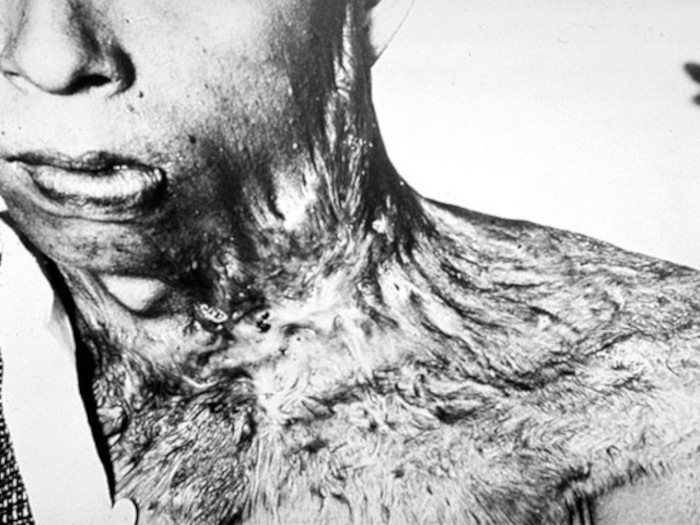

“I was so surprised I found my left eye looked just like a pomegranate, and I also found cuts on my right eye and on my nose and on my lower jaw, It was horrible. I was very shocked to find myself looking like a monster”.
“It was just like a living hell,” Takakura recalled. “After a while, it began to rain. The fire and the smoke made us so thirsty and there was nothing to drink. … People opened their mouths and turned their faces toward the sky [to] try to drink the rain, but it wasn't easy to catch the rain drops in our mouths. It was a black rain with big drops.”.
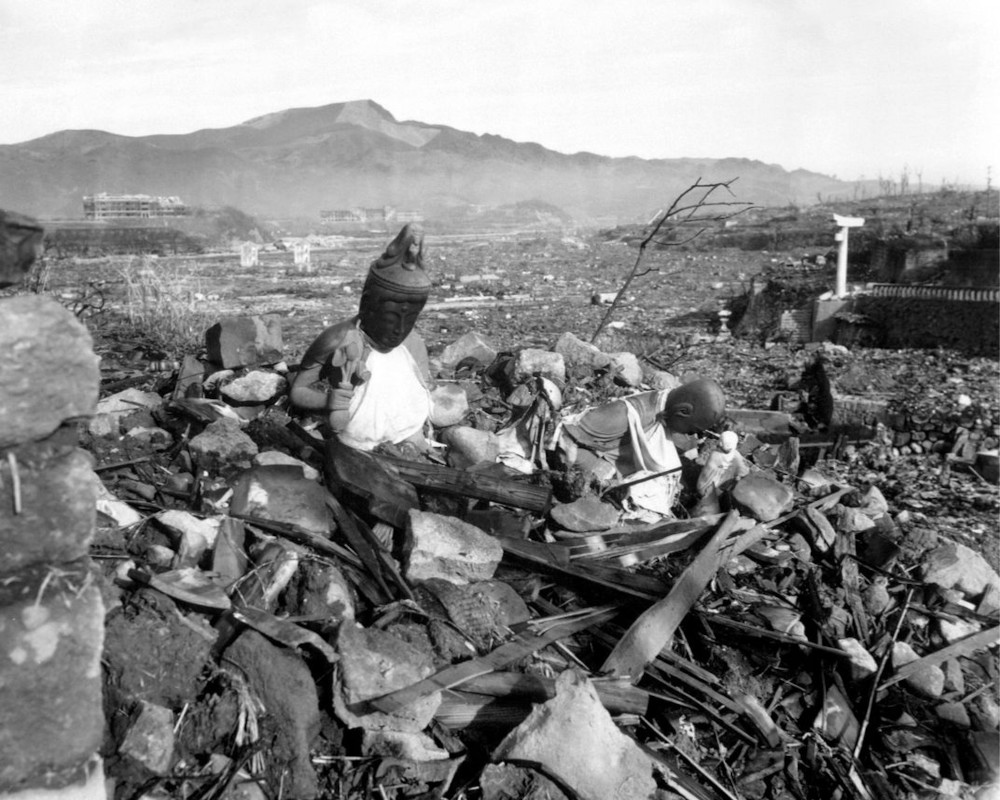
Rape of Okinawa
There are, however, numerous credible testimony accounts which allege that a large number of rapes were committed by U.S. forces during the Battle of Okinawa in 1945. Okinawan historian Oshiro Masayasu (former director of the Okinawa Prefectural Historical Archives) writes:
“Soon after the U.S. marines landed, all the women of a village on Motobu Peninsula fell into the hands of American soldiers. At the time, there were only women, children and old people in the village, as all the young men had been mobilized for the war. Soon after landing, the marines “mopped up” the entire village, but found no signs of Japanese forces. Taking advantage of the situation, they started “hunting for women” in broad daylight, and those who were hiding in the village or nearby air raid shelters were dragged out one after another.”.
According to Toshiyuki Tanaka, 76 cases of rape or rape-murder were reported during the first five years of the American occupation of Okinawa. However, he asserts this is probably not the true figure, as most cases were unreported. Belgian academic historian Dr Peter Schrijvers wrote, “many women” were brutally violated with “not even the least mercy”.
“Marching south, men of the 4th Marines passed a group of some 10 American soldiers bunched together in a tight circle next to the road. They were 'quite animated', noted a corporal, who assumed they were playing a game of craps. 'Then as we passed them', said the shocked marine, 'I could see they were taking turns raping an oriental woman. I was furious, but our outfit kept marching by as though nothing unusual was going on'.”.
Although Japanese reports of rape were largely ignored at the time due to lack of records, as many as 10,000 Okinawan women may have been raped, according to estimates from one Okinawan historian. It has been claimed that the rape was so prevalent that most Okinawans over age 65 around the year 2000 either knew or had heard of a woman who was raped in the aftermath of the war. Military officials denied the mass raping, and all surviving veterans refused the New York Times' request for an interview.
Professor of East Asian Studies and expert on Okinawa Steve Rabson said: “I have read many accounts of such rapes in Okinawan newspapers and books, but few people know about them or are willing to talk about them". Books, diaries, articles and other documents refer to rapes by American soldiers of various races and backgrounds. Masaie Ishihara, a sociology professor, supports this: “There is a lot of historical amnesia out there, many people don't want to acknowledge what really happened”.
“In 1944 heavy American air-bombings of Naha had left 1,000 dead and 50,000 homeless and sheltering in caves, and US naval bombardments contributed additionally to the death toll. During the Battle of Okinawa between 40,000 and 150,000 residents died. The survivors were put in internment camps by Americans.”.
In his book Tennozan: The Battle of Okinawa and the Atomic Bomb, George Feifer (American journalist, author, and historian) noted that by 1946 there had been fewer than 10 reported cases of rape in Okinawa. He explains that it was: “partly because of shame and disgrace, partly because Americans were victors and occupiers”. Feifer claimed: “In all there were probably thousands of incidents, but the victims' silence kept rape another dirty secret of the campaign”.
“90% of the buildings on the island were destroyed, along with countless historical documents, artifacts, and cultural treasures, and the tropical landscape was turned into “a vast field of mud, lead, decay and maggots”.
Many people wondered why it never came to light after the inevitable American-Okinawan babies the many women must have had. In interviews, historians and Okinawan elders said that some Okinawan women who were raped did give birth to biracial children, but that many of them were immediately killed or left behind out of shame, disgust or fearful trauma. More often, however, rape victims underwent crude abortions with the help of village midwives. According to George Feifer the majority of the likely thousands of rapes were committed in the north, where the campaign was easier and the American troops were not as exhausted as in the south. According to Feifer it was mostly troops landed for occupation duty who committed rapes.
Just over half a century later three U.S. servicemen, U.S. Navy Seaman Marcus Gill and U.S. Marines Rodrico Harp and Kendrick Ledet (all of them black afro-Americans), who were all serving at Camp Hansen on Okinawa, rented a van and kidnapped a 12-year-old Okinawan girl. They beat her, duct-taped her eyes and mouth shut, and bound her hands. Gill and Harp then raped her, while Ledet claimed he only pretended to do so due to fear of Gill. Gill pleaded guilty to the rape, and the other two men pleaded guilty to conspiracy. The trial concluded in March 1996. Prosecutors had asked for the maximum sentences for the men, 10 years each. The judge sentenced Gill and Harp to seven years' imprisonment; Ledet received six and a half years.
Ledet, who had claimed he did not rape the girl, died in 2006 in an apparent murder–suicide in the United States. He was found in the third-floor apartment of Lauren Cooper, a junior Kennesaw State University student and acquaintance, whom he had apparently raped and murdered by strangulation.
France
Vichy France (French: Régime de Vichy) is the common name of the French State (État français) headed by Marshal Philippe Pétain during World War II. After being appointed Premier by President Albert Lebrun, Marshal Pétain's cabinet agreed to end the war, signing an Armistice with Germany on 22 June 1940. On 10 July, the Third Republic was effectively dissolved as Pétain was granted full powers by the National Assembly. At Vichy, Pétain established an authoritarian government that reversed many liberal policies and began tight supervision of the economy, calling for “National Regeneration”, with central planning a key feature.
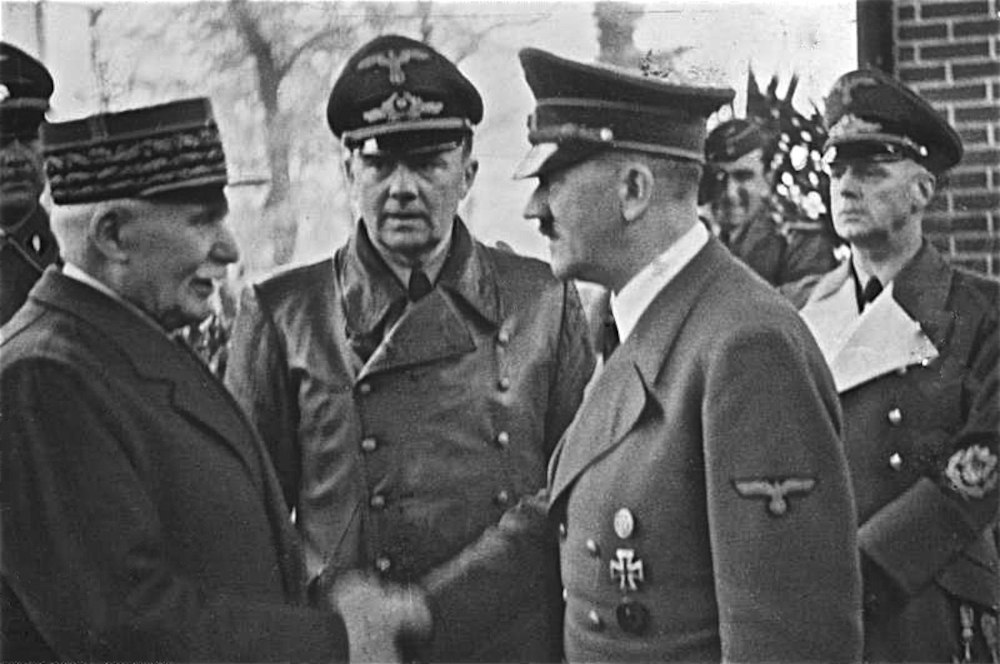
Labour unions came under tight government control. Conservative Catholics became prominent and clerical input in schools resumed. Paris lost its “Weimar” inspired avant-garde status in European art and culture. The media were tightly controlled and promoted exclusion of Jews, and, after June 1941, anti-Bolshevism. French police were ordered to round up counter-revolutionaries, subversives and political refugees. Much of the French public initially supported the government, despite its undemocratic nature and its difficult position with respect to the Germans, often seeing it as necessary to maintain a degree of French autonomy and territorial integrity.
Carpet Bombing
It's important to understand that many French people did NOT welcome the Allied invasion. Many French saw the Germans as liberators and protectors against the threat of Communism. The thousands and thousands of French who volunteered to fight beside the Germans on the Eastern Front is a testament to this.
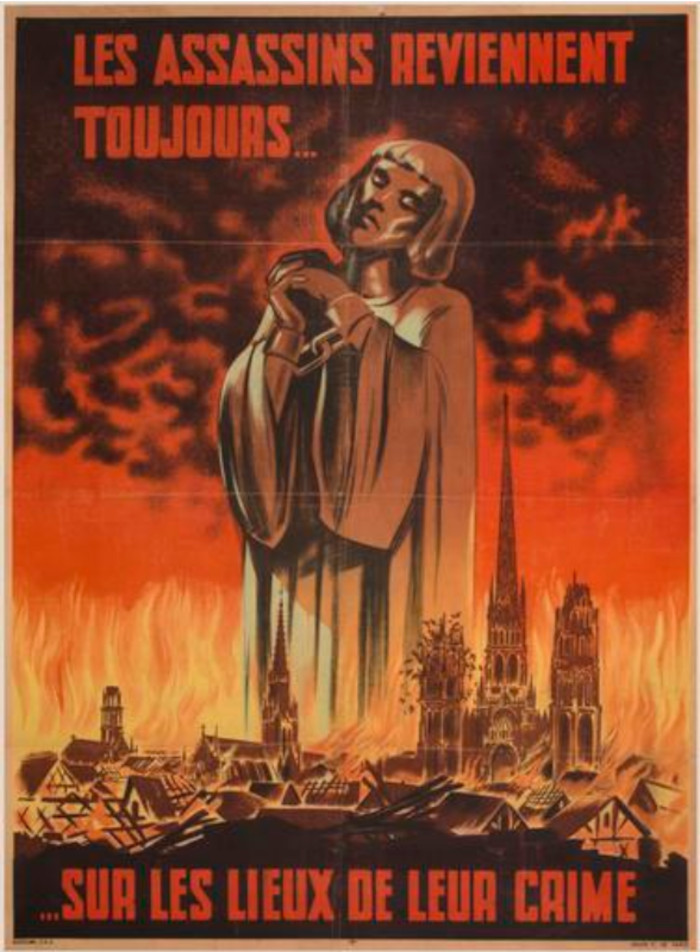
There was a also great deal of hatred and animosity between the British and the French people. When the Allied invasion finally happened, the French learned first-hand of the extreme brutality and violence of the Allies, who ruthlessly levelled cities and towns throughout France and killed thousands of French civilians.
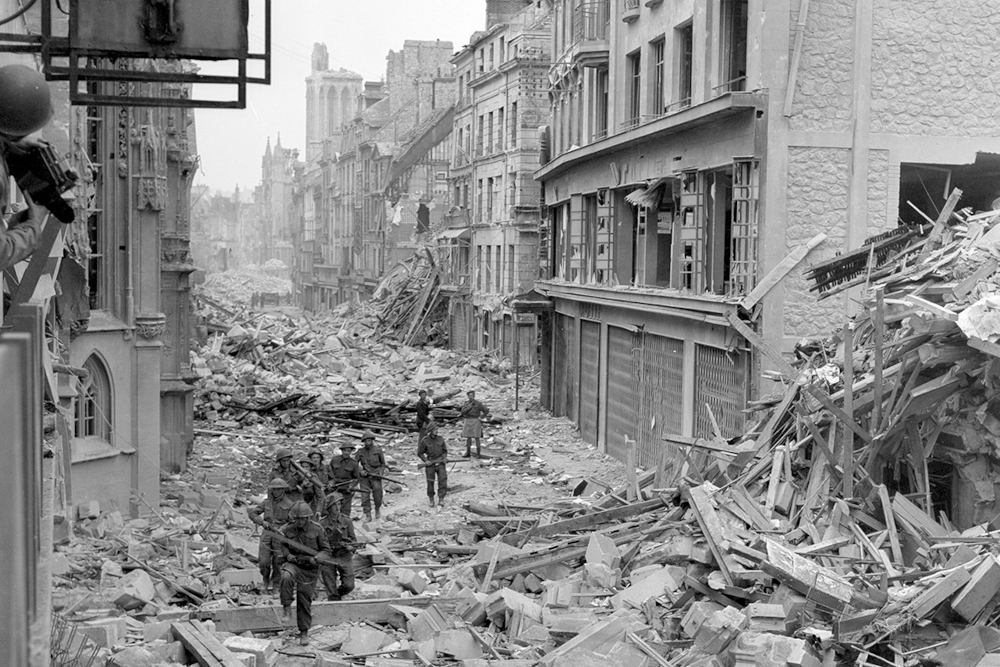
“One must drive through Caen every time one goes to or from the Orne front, and it's still a horrible and rather shaming thing. The people of Caen will never quite understand why we had to do anything so awful to them. Still, day by day, the bodies of their fellow-citizens are being dug out of the ruins”.
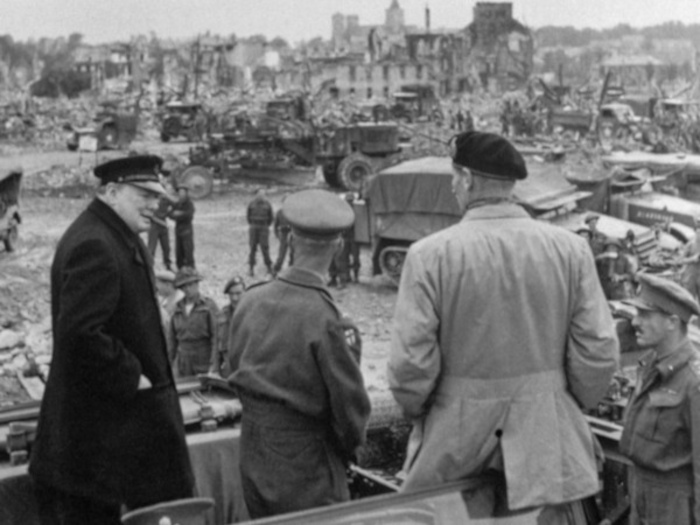
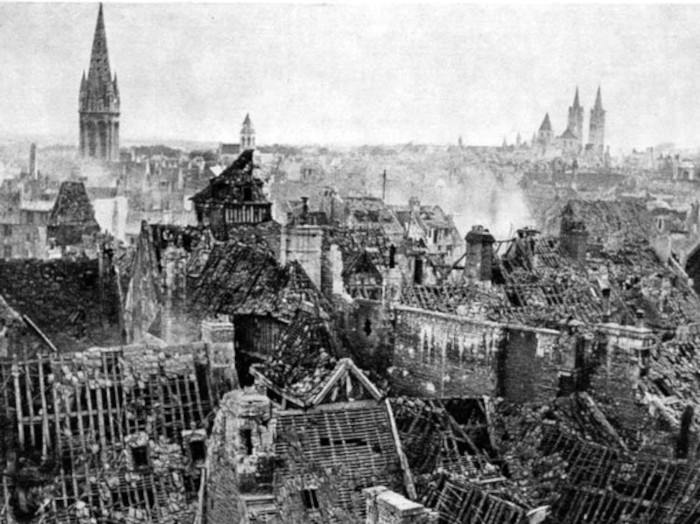
Between the time of the German victory in the Battle of France and the liberation of the country, the Allied Forces bombed many locations in France. In all, 1,570 French cities and towns were bombed by the Allies between June 1940 and May 1945. The total number of civilians killed was 68,778 men, women and children (including the 2,700 civilians killed in Royan). The total number of injured was more than 100,000. The total number of houses completely destroyed by the bombings was 432,000, and the number of partly destroyed houses was 890,000. The cities that saw the most destruction were the following:
- Saint-Nazaire (Loire Atlantique): 100%
- Tilly-la-Campagne (Calvados): 96%
- Vire (Calvados): 95%
- Villers-Bocage (Calvados): 88%
- Le Havre (Seine-Maritime): 82%
- Saint-Lô (Manche): 77%
- Falaise (Calvados): 76%
- Lisieux (Calvados): 75%
The bombings in Normandy before and after D-Day were especially devastating. The French historian Henri Amouroux in La Grande histoire des Français sous l’Occupation, says that 20,000 civilians were killed in Calvados department, 10,000 in Seine-Maritime, 14,800 in the Manche, 4,200 in the Orne, around 3,000 in the Eure. Altogether, that makes more than 50,000 killed. During the year 1943 alone, 7,458 French civilians died under Allied bombs. On May 27, 1943, Allied bombings killed 3,012 French civilians in bomb runs over Marseille, Avignon, Nîmes, Amiens, Sartrouville, Maisons-Laffitte and Eauplet.
Internment and Execution
After France was occupied by the invading Allied armies, many thousands who had helped free their country and/or had worked for the Vichy government were murdered by communists and other human monsters. An astounding 300,000 people were arrested which resulted in 'guilty' verdicts of 124,613 people, of which around 50,000 of those received jail sentences. 6,763 were condemned to death in civil courts (767 were actually passed sentence on), and an equal number were condemned in military tribunals.
“The French population did not seem in any way pleased to see us arrive as a victorious army to liberate France. They had been quite content as they were, and we were bringing war and desolation to their country.”.
Over 50,000 others were stripped of their civil rights. Another 25,000 professionals, administration and otherwise, were also penalized. Democratic justice in all of its hypocritical, iron-fisted glory. Untold thousands of women were raped, humiliated and beaten. Their crime: they were accused of been having romantic relationships with Germans. One book estimates the number of women targeted to be over twenty thousand!
French Waffen-SS volunteers
French Waffen-SS volunteers ranged from 18,000 to 22,000 men. They were loyal and ferocious soldiers who stood with their German comrades until the very last moments of WWII. It has been recorded that the French Waffen-SS forces also included a number of personnel from the French colonies, including French Indo-China (what the French colonialists called Laos, Vietnam and Cambodia), and even a lone Japanese! Four black men (one was from Martinique) are also recorded to have volunteered, and were accepted. They fought on the Eastern Front, and at least one of them is known to have fallen in action.
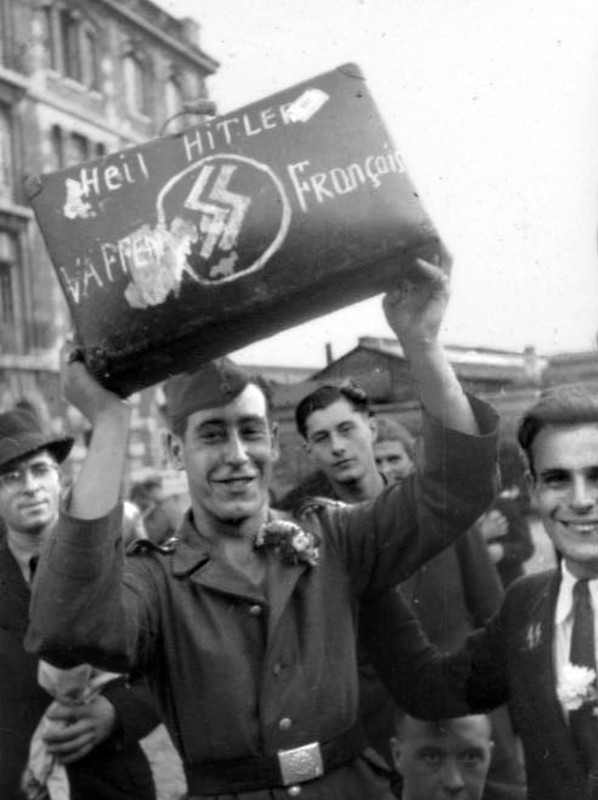
The last battalion of the 33rd Waffen Grenadier Division of the SS Charlemagne, known as the known as Charlemagne Battalion, under the command of SS-Hauptsturmführer Henri Fenet, fought in the Battle of Berlin in the Nordland division. These shining French heroes, only 320-330 men left of their proud force which once stood in the thousands, fought with a tenacity and bravery seldom seen in history. In the central sector of fighting, they destroyed at least sixty Russian tanks alone!
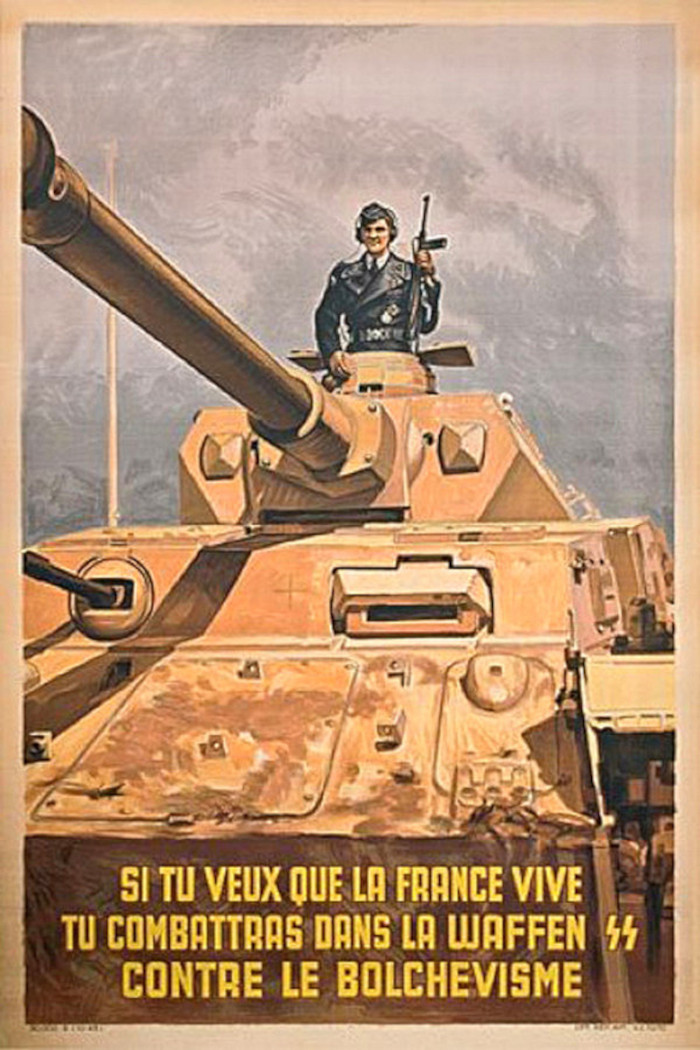
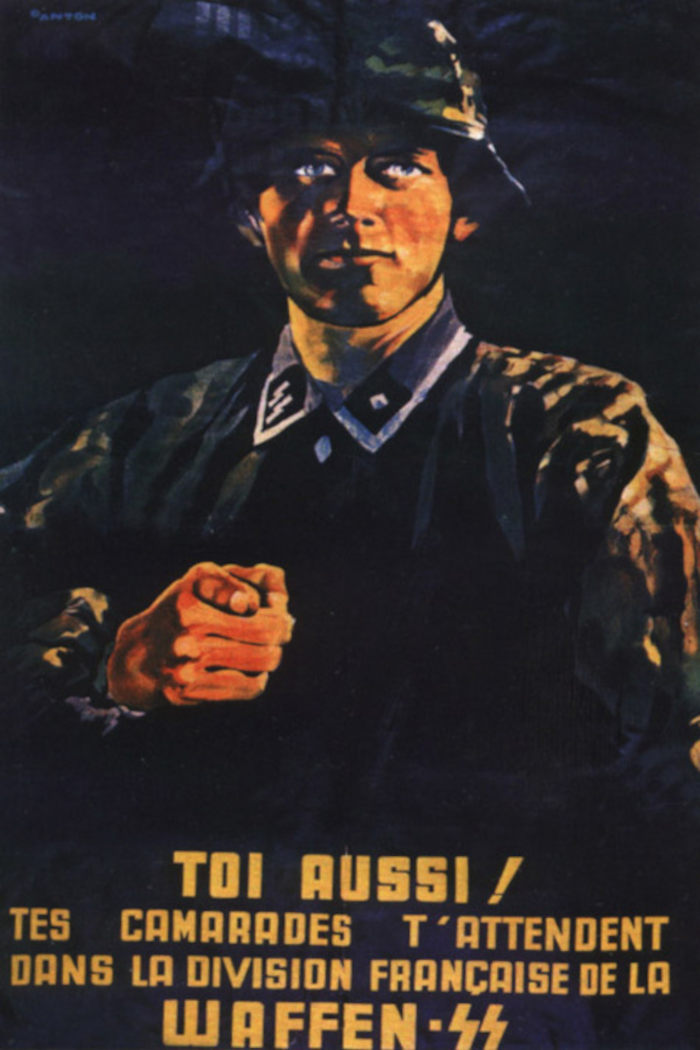
They viciously defended the approach to Adolf Hitler's bunker in the final days of the war. In fact, they were amongst the very last defenders of the bunker! Surrounded, hungry, wounded and knowing all was lost, their heroic spirits proved their undying loyalty to Adolf Hitler and Europe. Until May 2, they resisted the Russian advance. The last of these men, including their leader Henri Fenet, were captured at this date. They were the last and only unit still defending the bunker.
Ugly Carnivals
French women had their heads shaved often at gunpoint after Allied liberation, these public events were called “Ugly carnivals”. With the hair regarded as one of a woman’s most feminine features right from the Middle Ages, this mark of shame, denuding a woman of what was supposed to be her most seductive feature, was commonly a punishment for adultery. There were mostly three categories of the collaborative acts which were: political, financial and personal. It was categorized as political if one belonged to an organization who shared opposing views in favour of the opposition. A financial collaborator was one who benefited monetarily from contact with a member of the German occupation.
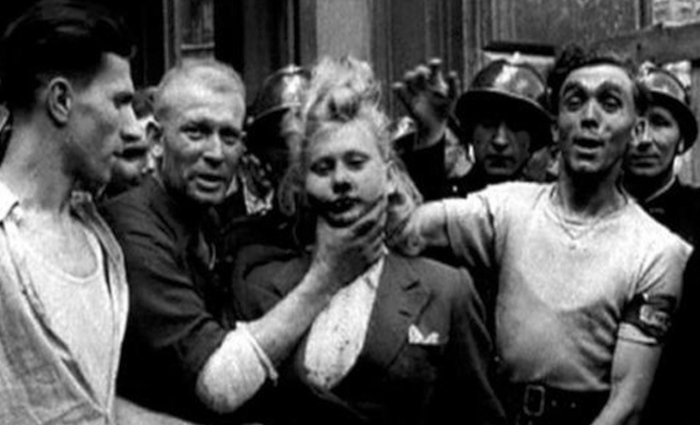
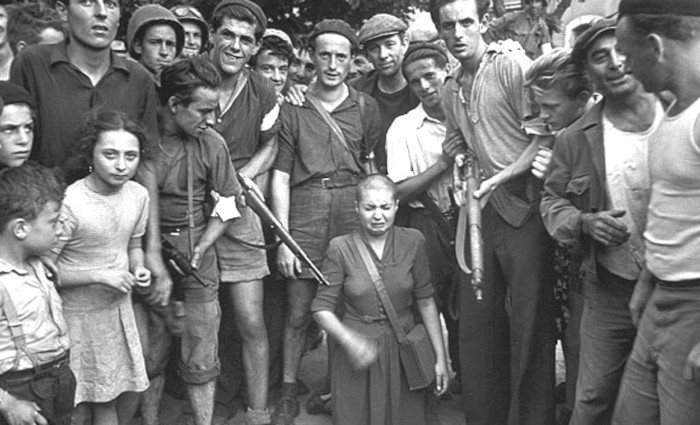
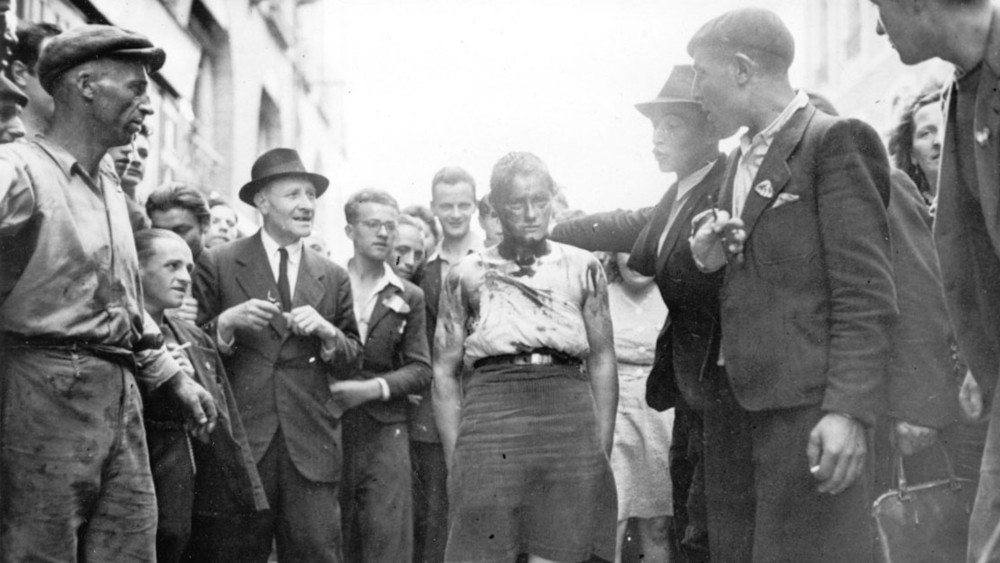
“Most Frenchmen speak of the correctness of the German Army's behaviour. They seem particularly impressed that German soldiers were shot for incivility to women, and compare this with the American troops' bad behaviour toward women.'
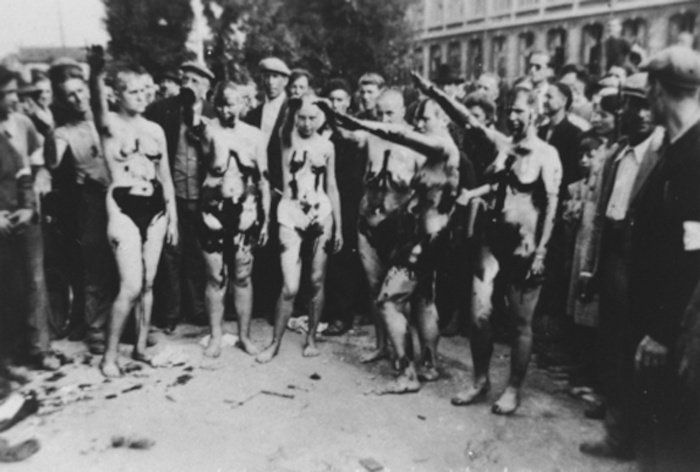
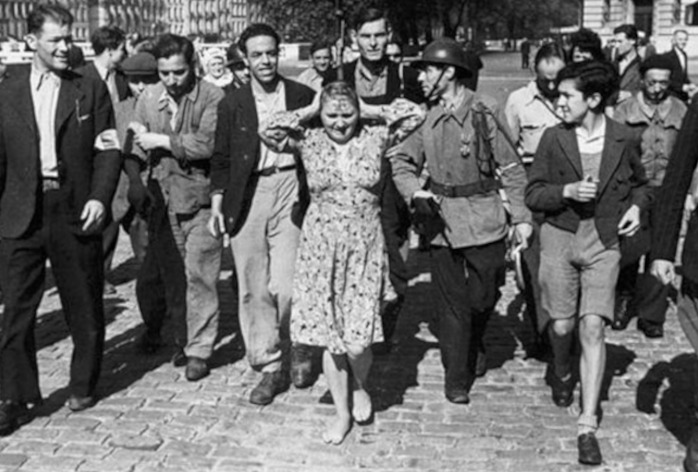
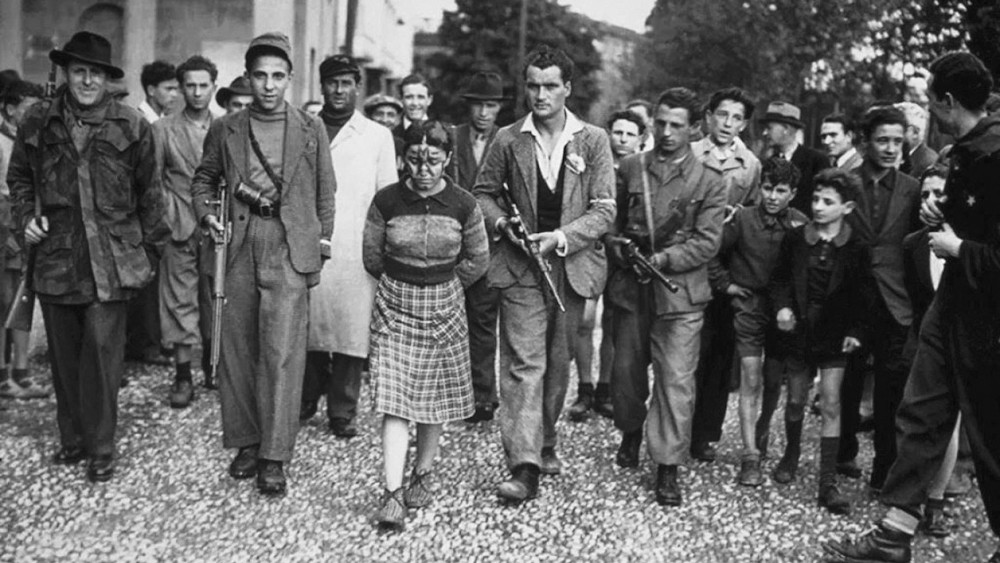
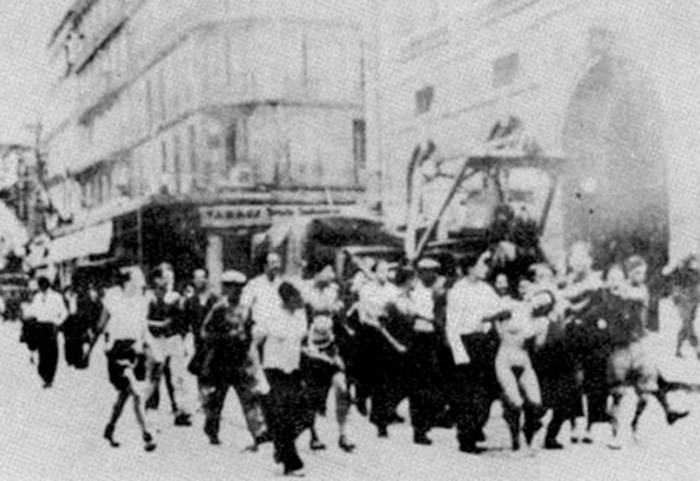
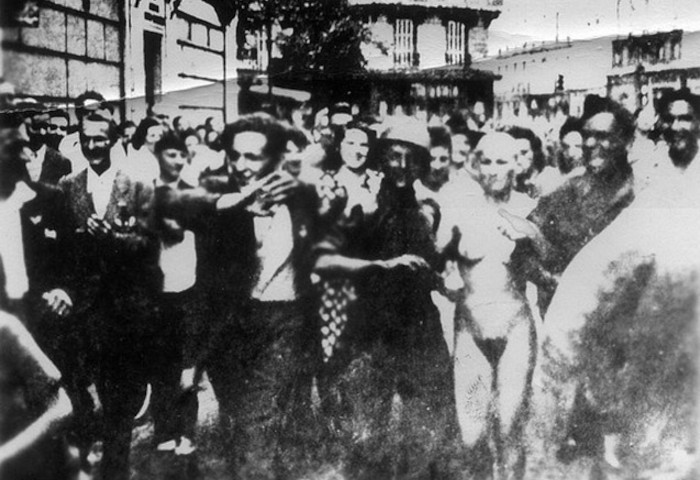

“I saw absolutely no evidence of German abuse of the population… The attitude of the French was sobering indeed. Instead of bursting with enthusiasm, they seemed not only indifferent but sullen. There was considerable cause for wondering whether these people wished to be “liberated.”.
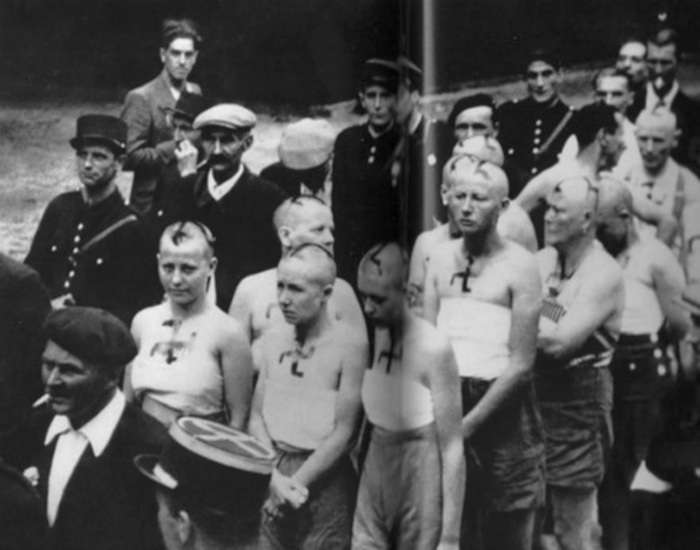

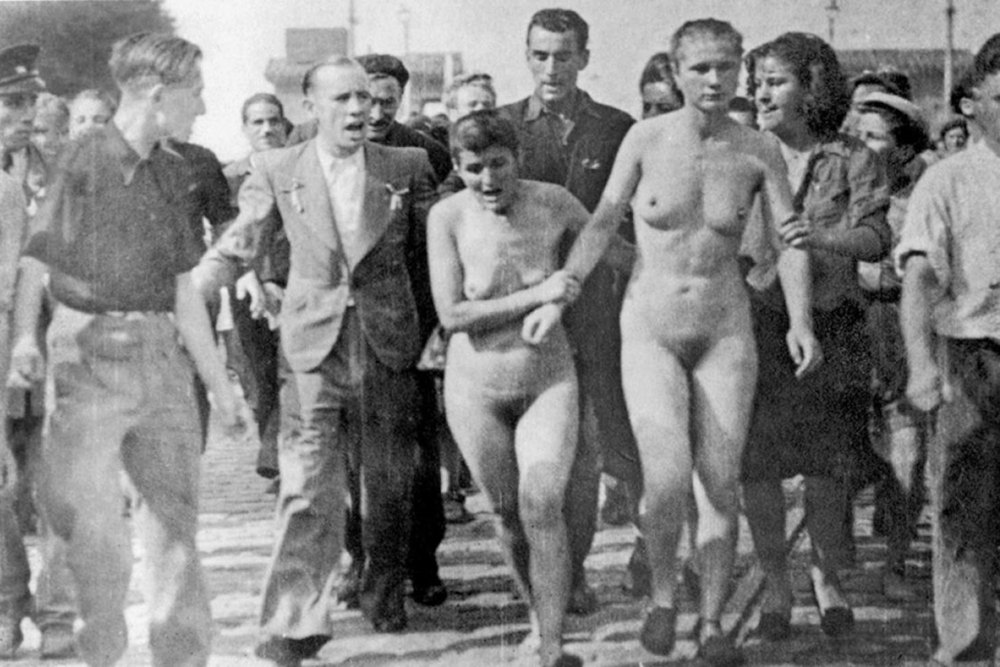
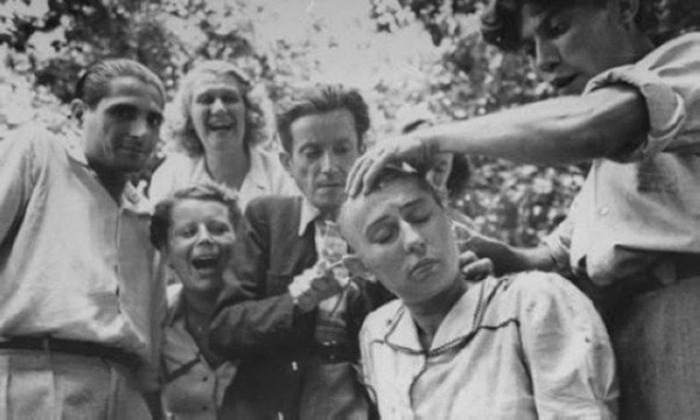
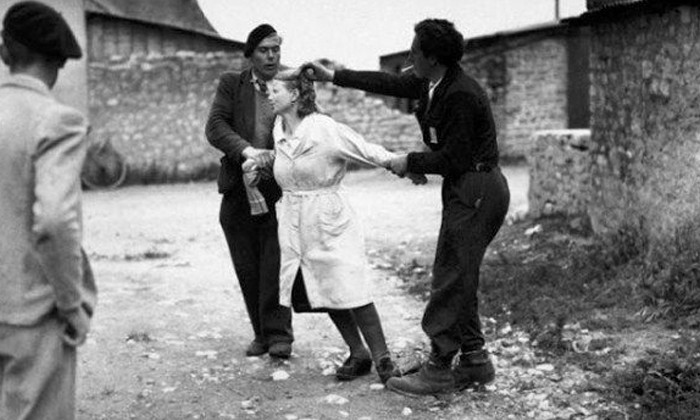
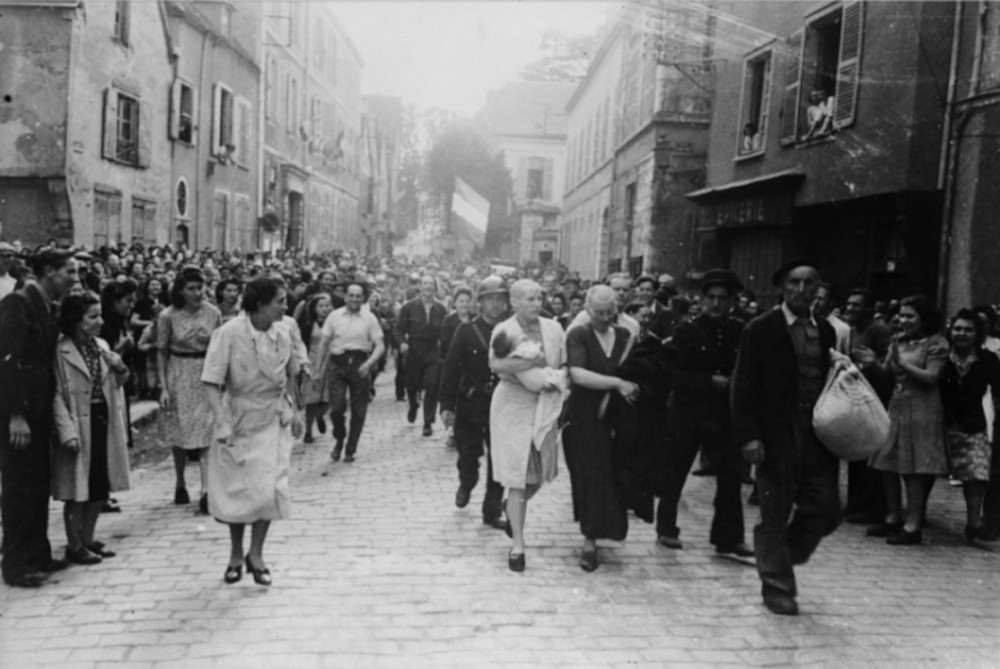
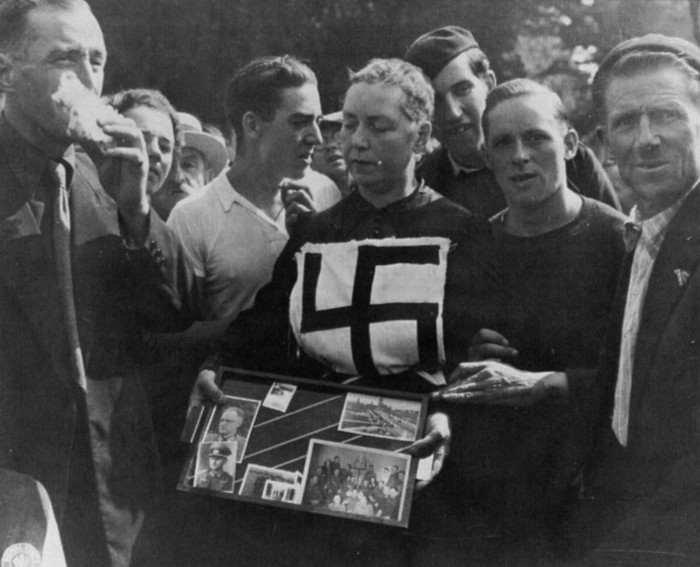
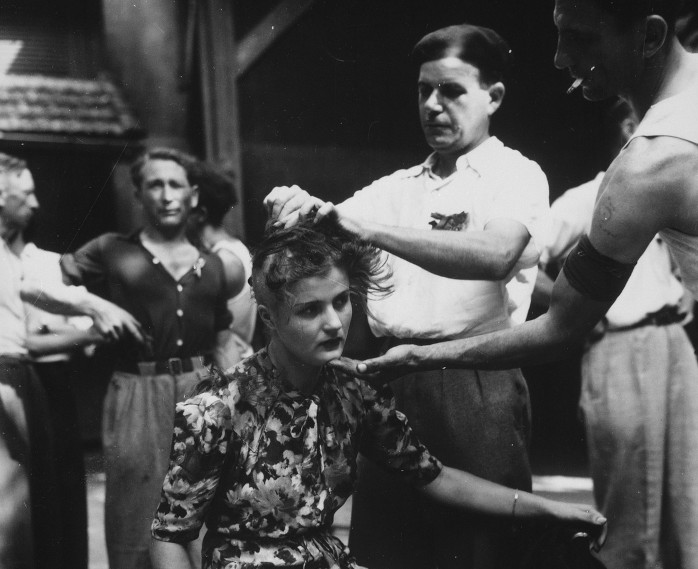
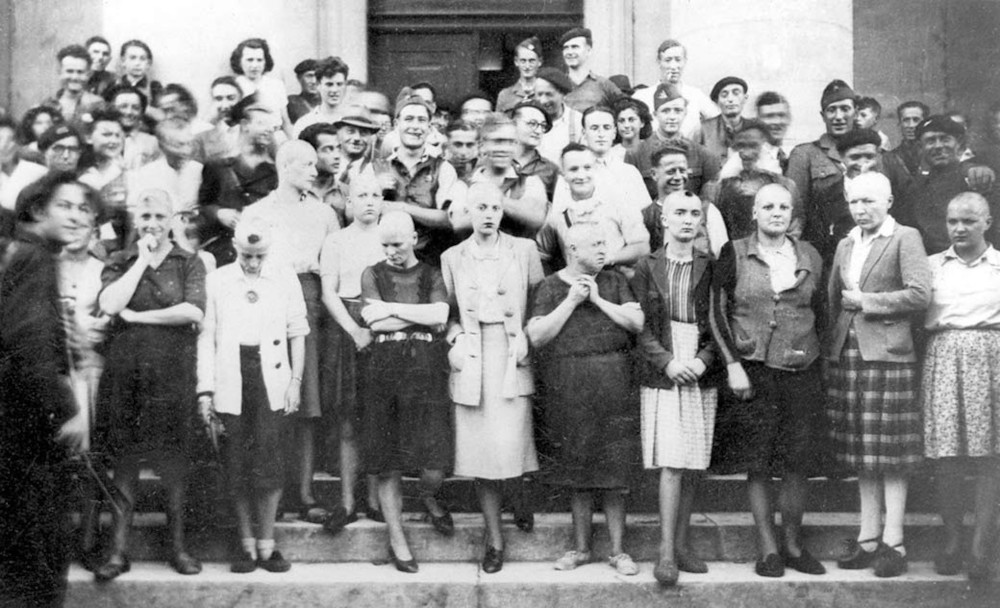
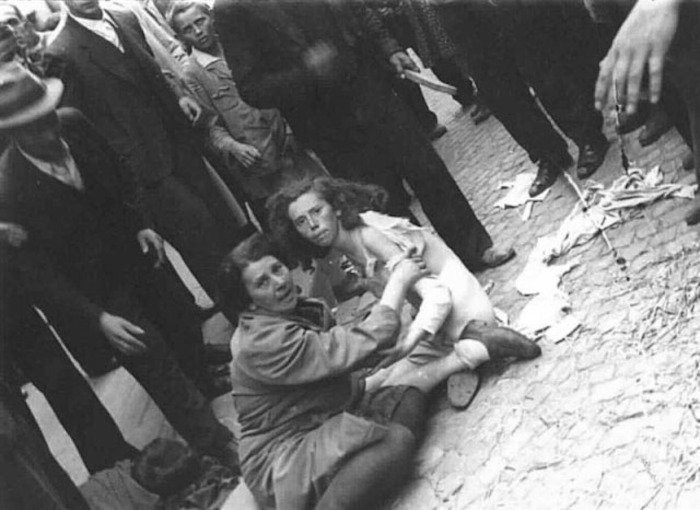
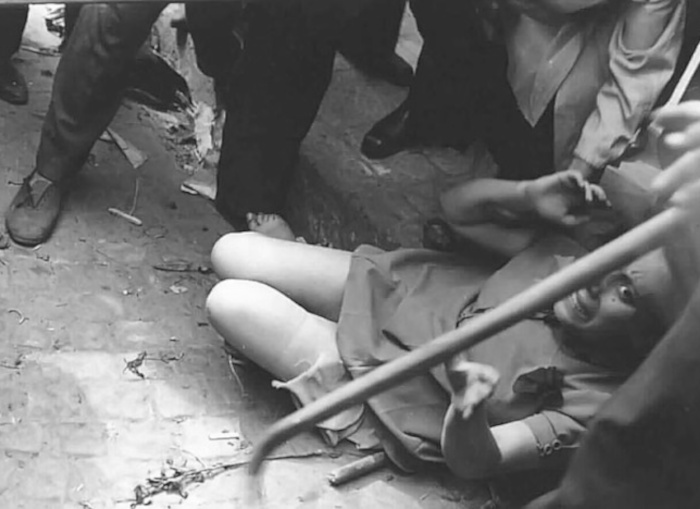
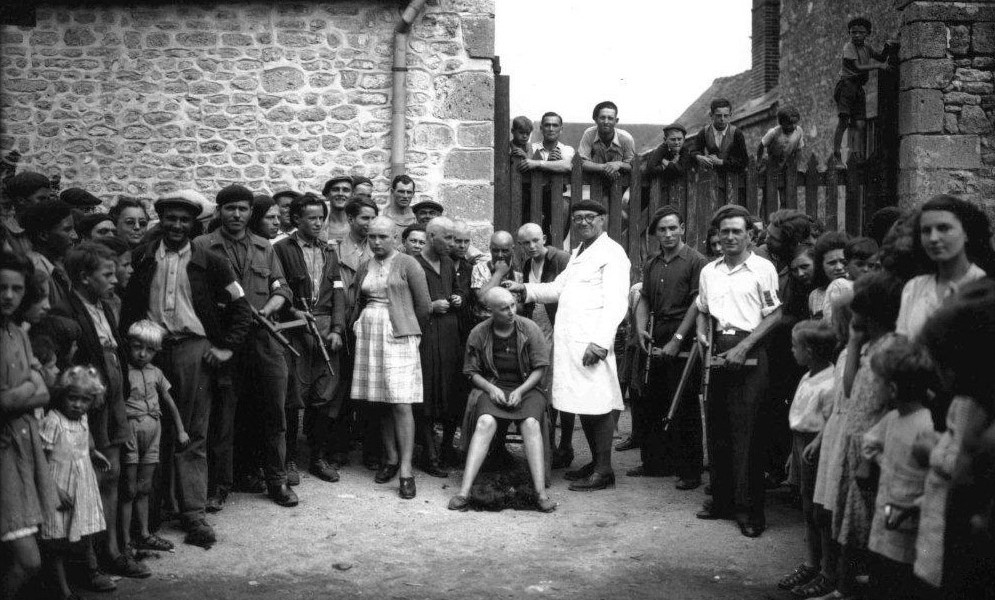
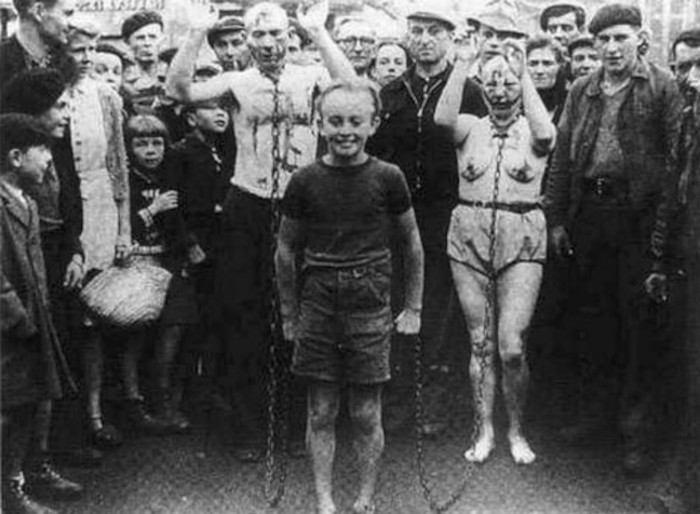
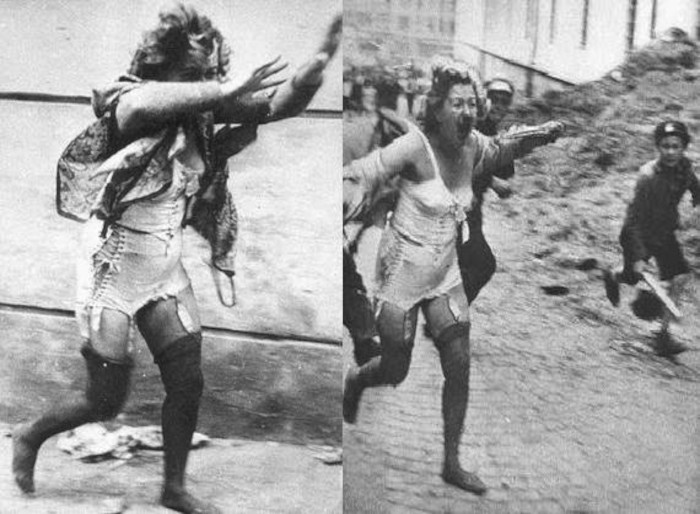
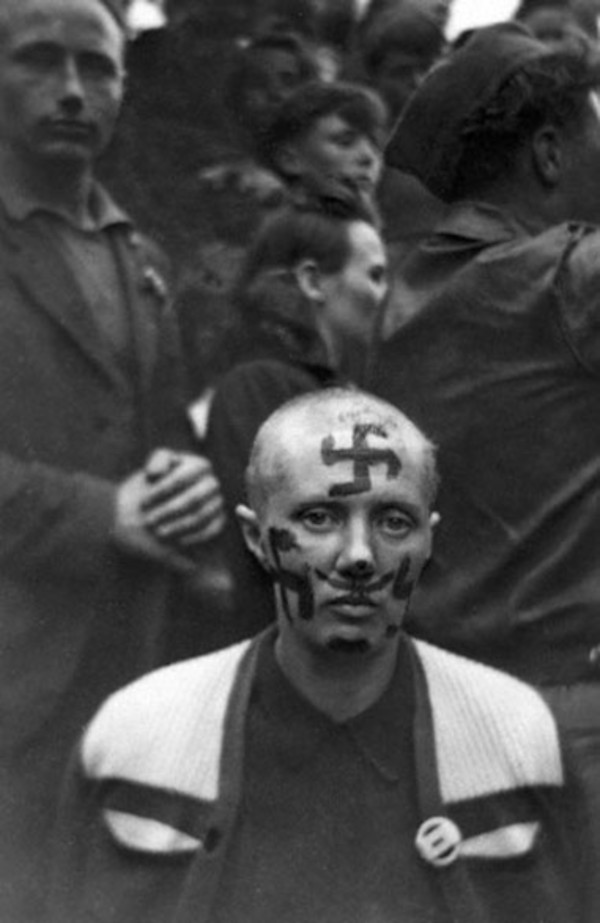
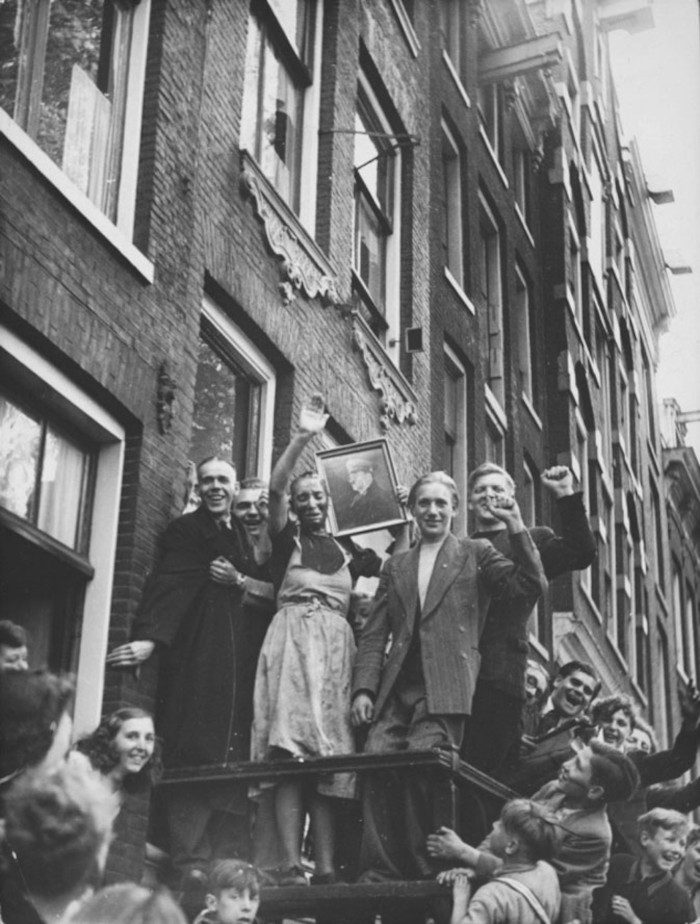
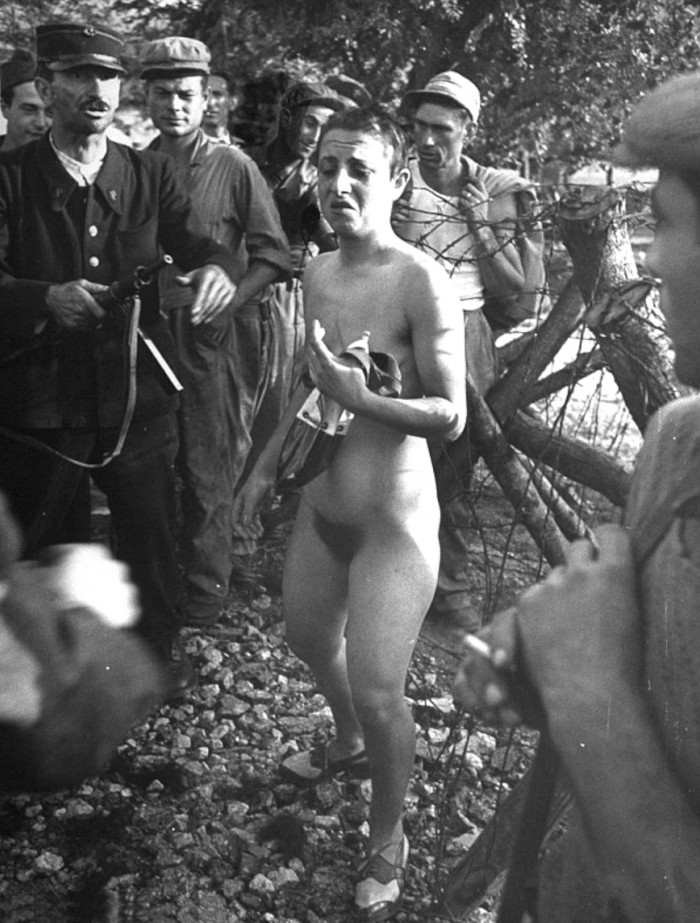
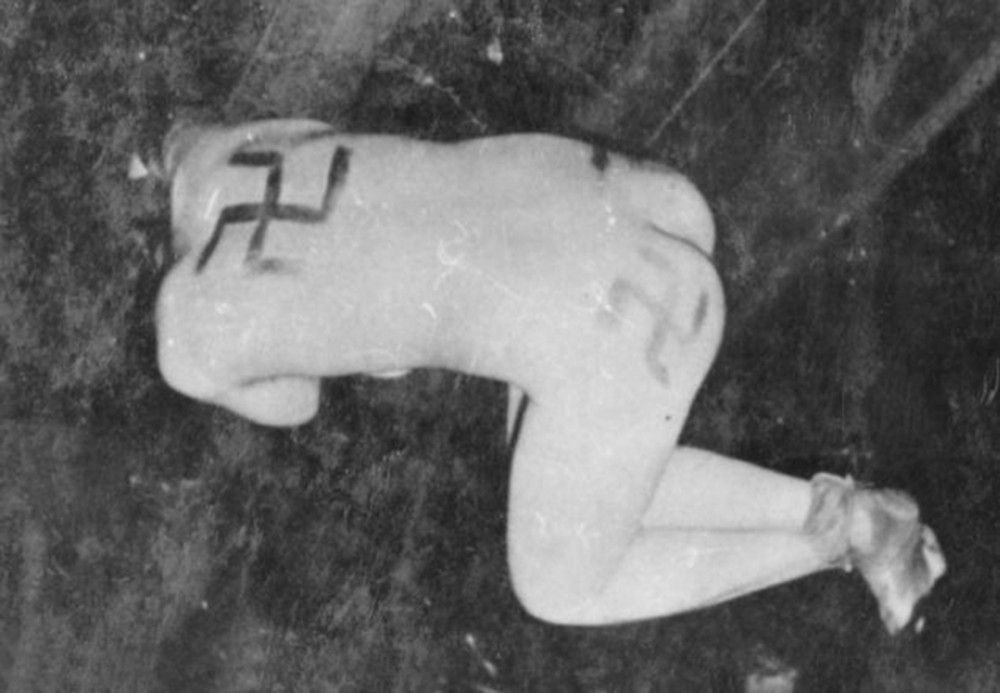
Shaving women’s heads as a mark of retribution and humiliation was reintroduced in the 20th century. Just as the war approached its end, the French accused countless individuals, mostly women, of collaborating with the Germans against the French. Between 1943 and 1946, about twenty thousand women were victims of the humiliating act as a result of these allegations.
Rape of Normandy
By the late summer of 1944, soon after the invasion of Normandy, women in Normandy began to report rapes by American soldiers. Hundreds of cases were reported. In 1945, after the end of the war in Europe, Le Havre was filled with American servicemen awaiting return to the States. A Le Havre citizen wrote to the mayor that the people of Le Havre were “attacked, robbed, run over both on the street and in our houses” and “This is a regime of terror, imposed by bandits in uniform.”.
A coffee-house owner from Le Havre testified, “We expected friends who would not make us ashamed of our defeat. Instead, there came only incomprehension, arrogance, incredibly bad manners and the swagger of conquerors.” Such behaviour also was common in Cherbourg. One resident stated that “With the Germans, the men had to camouflage themselves—but with the Americans, we had to hide the women.”.
A brothel, the "Blue and Gray Corral", was set up near the village of St. Renan in September 1944 by Major General Charles H. Gerhardt, commander of the 29th Infantry Division, partly to counter a wave of rape accusations against American soldiers. It was shut down after a mere five hours in order to prevent civilians in the United States from finding out about a military-run brothel.
The Free French Forces high command sent a letter of complaint to the Supreme Commander Allied Expeditionary Force General Dwight D. Eisenhower.[9] He gave his commanders orders to take action against all allegations of murder, rape, assault, robbery and other crimes. In August 1945, Pierre Voisin, mayor of Le Havre urged Colonel Thomas Weed, U.S. commander in the region, to set up brothels outside Le Havre. However, U.S. commanders refused.
White American soldiers were much less likely to be executed for rape. 130 of the 153 troops disciplined for rape by the Army were African American. U.S. forces executed 29 soldiers for rape, 25 of them African American. Robert Lilly, Regent's professor of sociology and criminology at Northern Kentucky University, estimated that U.S. servicemen committed around 3,500 rapes in France between June 1944 and the end of the war.
